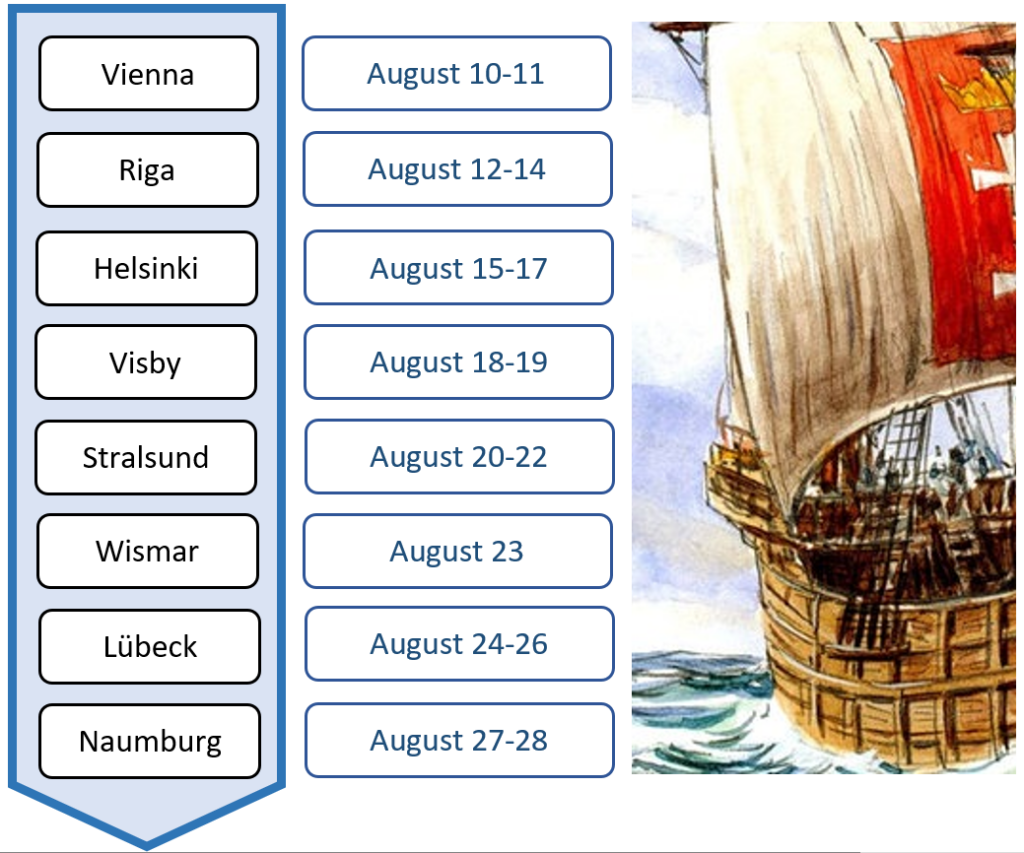Lübeck
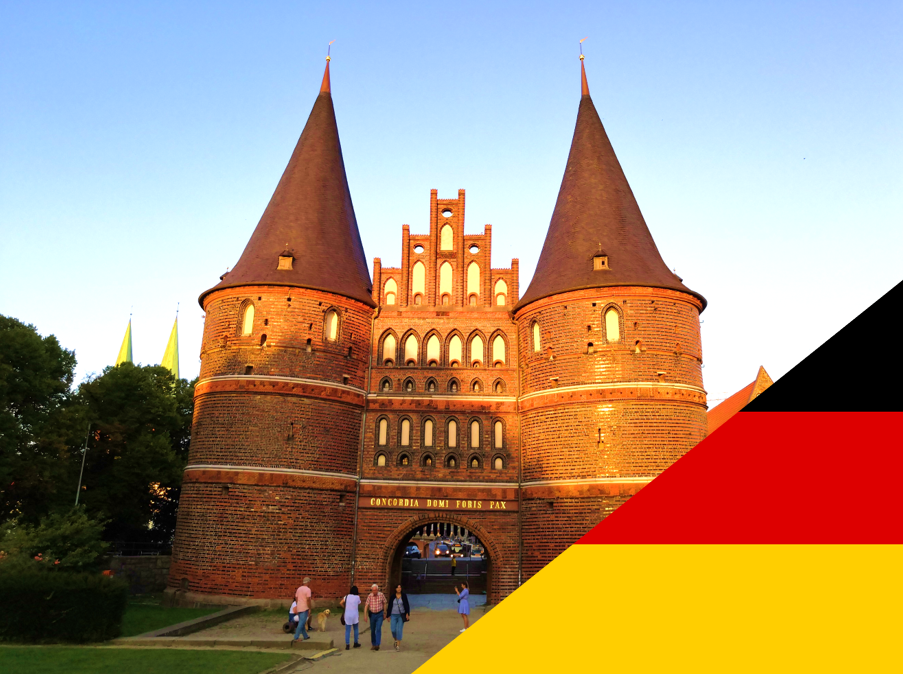
Day 1
Finally, it is time for the “Queen” and “Mother of the Hanseatic League”: Lübeck. The founding of Lübeck in 1143 is closely interwoven with the emergence of the Hanseatic League. As one of the first German cities with access to the Baltic Sea, its favorable location enabled trade between the resource-rich areas of northern Russia and the Baltic Sea. The old town of Lübeck is surrounded by the river Trave and channels which connects the city to the Baltic Sea.
Like so many Lübeckers on this warm summer day, I took a trip to the Travemünde district. Travemünde is not only an important port at the confluence of the Trave river and the Baltic Sea, but also a popular recreation area and health resort.

In the afternoon, I met friendly locals with ambitions as tourist guides. They showed me around Lübeck’s old town and the Willy Brandt House, where you can even see a part of the Berlin Wall. Willy Brandt, the former mayor of Berlin and later chancellor, was born in Lübeck. Many thanks to Silvia and Eva for showing me around their home town!
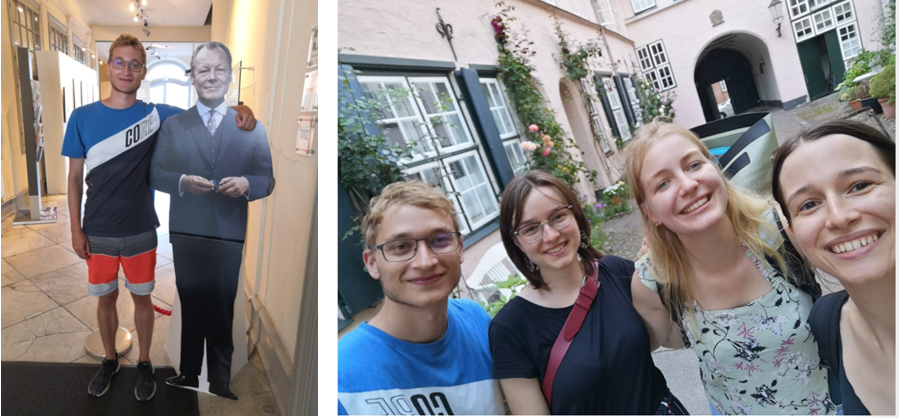
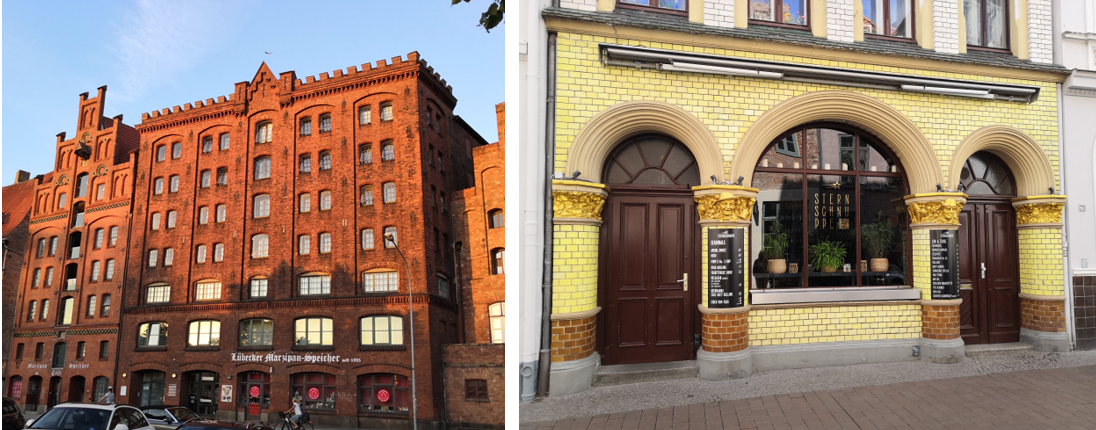
Day 2
On day 2 in Lübeck, I continued to explore the old town, which is completely located on an island and is also partly an UNESCO World Heritage Site. Lübeck’s black-glazed brick town hall is one of the largest medieval town halls in Germany and testifies to the wealth of the Hanseatic city. Over the years it has been extended again and again, which is why it combines many styles. Unfortunately, the historic Hansa Hall, where the Hansa Days (a meeting of representatives of the Hanseatic cities) were held, is no longer preserved.
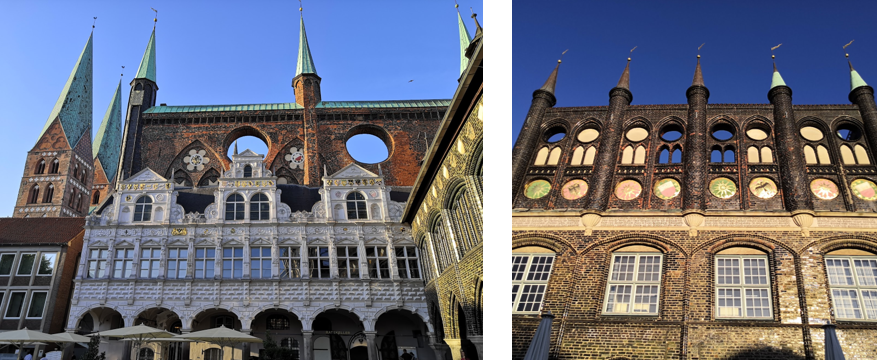
Afterwards I visited St. Mary’s Church, one of the largest brick churches in the world, built on the highest point of the old town. St. Mary’s Church represents the self-confident, economically strongly aspiring citizens and their intention was to clearly surpass the city’s Romanesque bishop’s church, Lübeck Cathedral, in size. Furthermore, besides the picture cycle of the Dance of Death and the astronomical clock, the church is known for its fallen bells. The bells at the bottom of the southern tower, which fell down during the fire caused by a bombing raid in the Second World War, still lie in the same place as memorial. Finally, I visited the Marzipan Museum, as Lübeck is world famous for this sweet. As an important trading hub, which insured a steady supply of the exotic ingredients (e.g. almonds), Lübeck became well known for the quality of its marzipan.
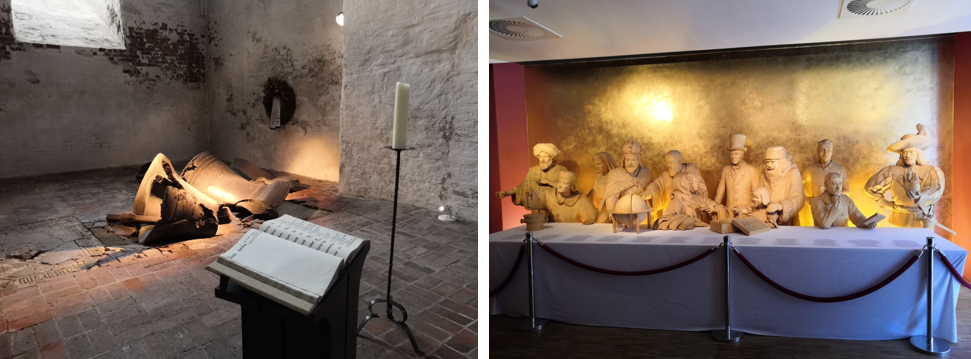
Day 3
Last day in Lübeck and time for a real classic: The Holsten Gate, a gate of the Lübeck city fortifications and the city’s landmark. Originally it was the middle gate in a row with three other Holsten gates. Today there is also a museum in the building that shows among other things, models of the ships of the Hanseatic League.
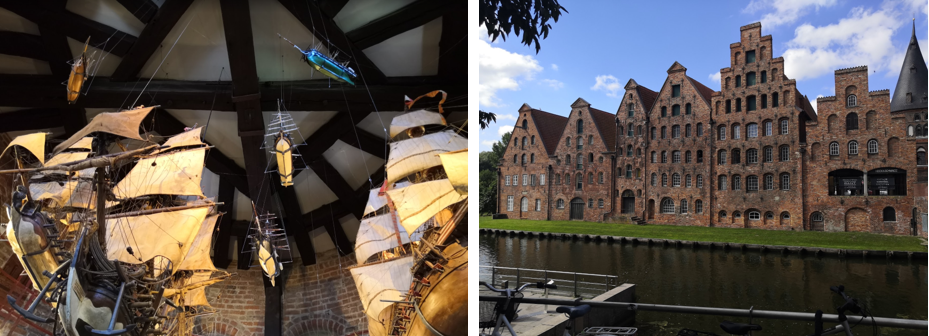
To find out more about the Hanseatic League I visited the European Hanseatic League museum. The museum had a cool interactive exhibition that showed the history of the Hanseatic League from the beginning to its decline. Especially interesting was what happened to the Hanseatic League after the Thirty Years’ War. In 1669, the last Hansa Day took place in Lübeck – the Hanseatic cities had not succeeded in developing viable power structures after the war. However, the Hanseatic League was never formally dissolved, but faded out slowly. In addition, I also appreciated the livable depiction of the 4 main kontors (offices in Nowgorod, London, Brugge/Antwerpen and Bergen) abroad and their history. In contrast to the other 3 kontors, the harbour district (Bryggen) in Bergen can still be visited and is certified as UNESCO World Heritage Site (as an example of Hanseatic architecture in Norway).
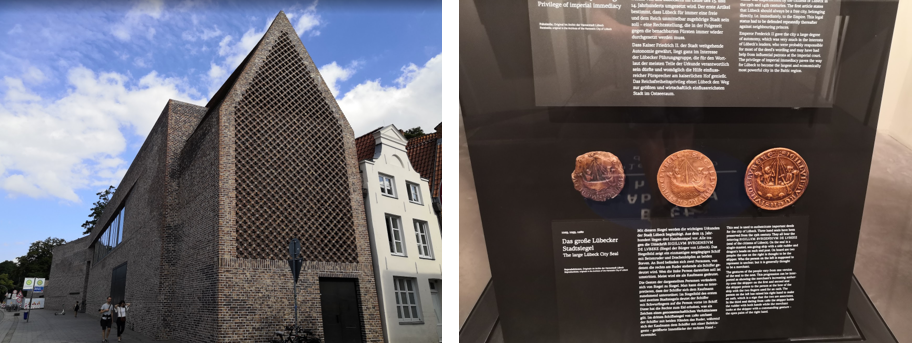
Wismar
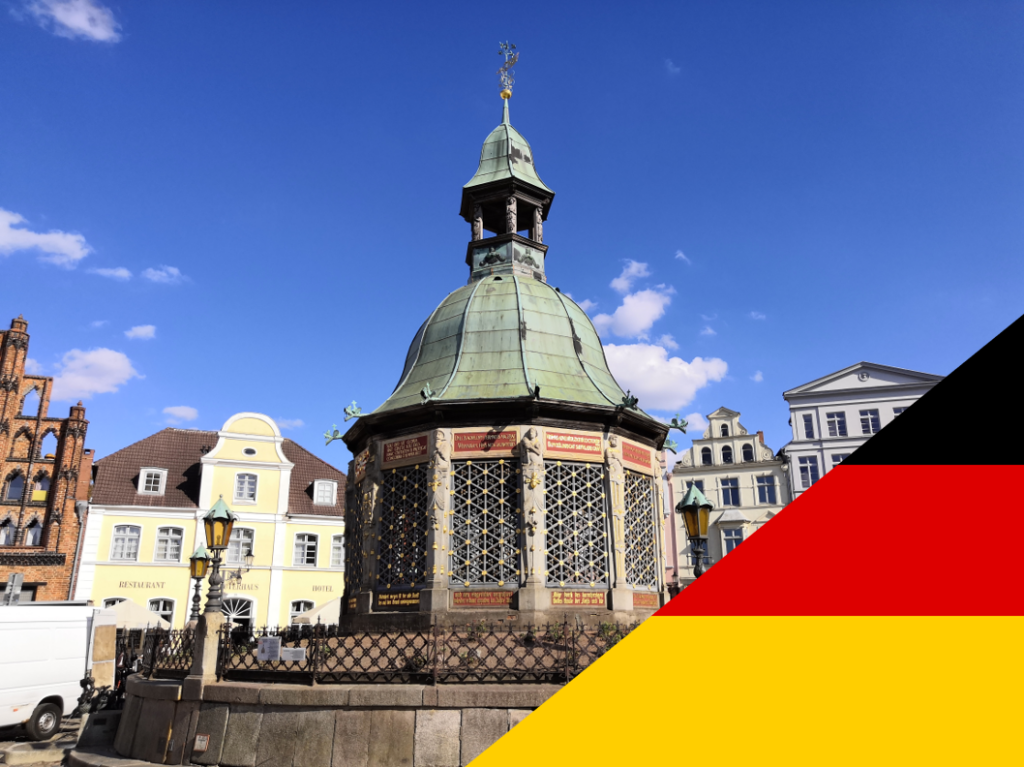
From Stralsund the journey continues to its Unesco brother Wismar whose old towns form together one heritage. Interestingly, both Hanseatic cities have a wallpaper room in the World Heritage House and have the addition “Hansestadt” as their official city name. Like Stralsund, Wismars old town consists of a unique mixture of Brick Gothic houses (e.g. Alter Schwede Haus) and baroque houses from the Swedish period (e.g. Zeughaus). What is special about Wismar is that the city has largely retained its harbour basin in terms of location and specific design since 1211. The landmark of the 6st biggest city of Mecklenburg-Vorpommern is the Wasserkunst: A pavilion-like, free-standing building directly on the market square which was used for water supply.
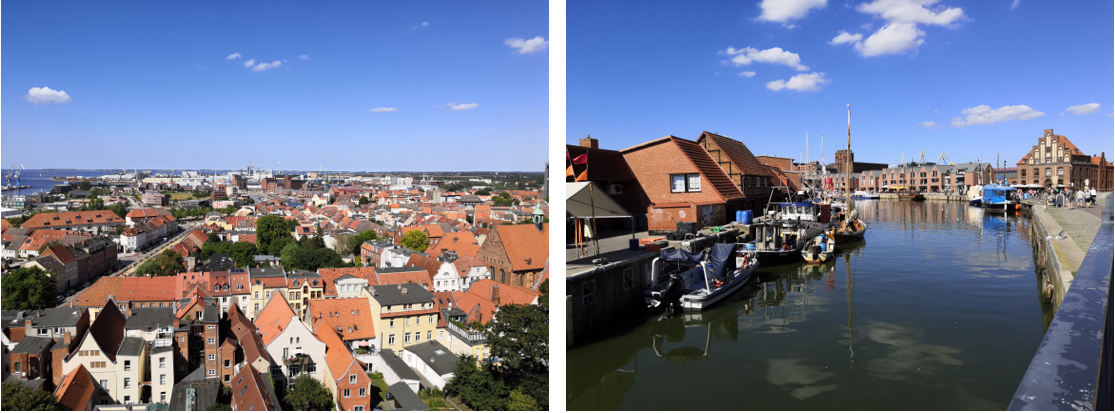
Another symbol of Wismar are the “Schwedenköpfe”, which can be found for instance on piles when entering Wismar harbour, in front of the “Baumhaus” and on the entrance of the restaurant “Alter Schwede”. Its exact purpose is still unclear.
Another interesting site is the “Grube” – An artificial watercourse through Wismar’s old town that is bridged by a half-timbered house shortly before the harbour.
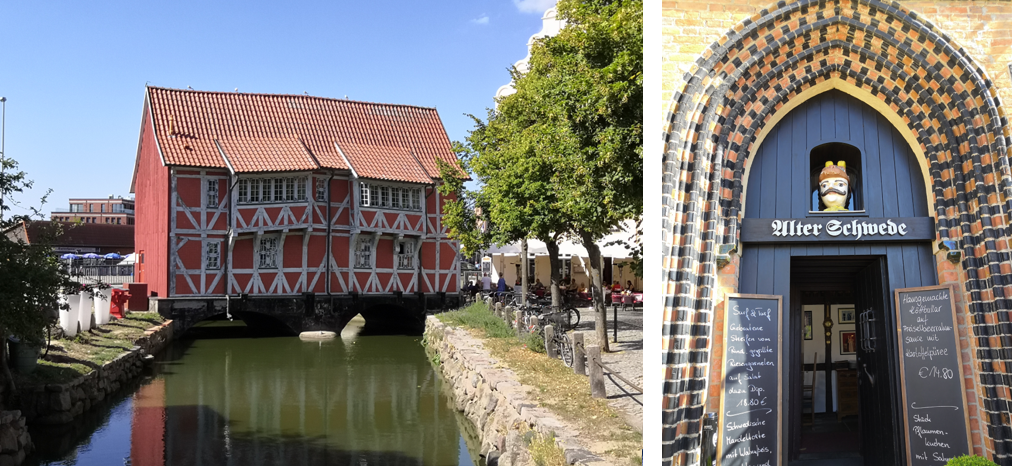
Besides that Wismar’s old town has three main churches: St. Georg’s Church, St. Mary’s Church and St. Nicolai’s Church. Two of them were severely destroyed during the 2nd World War, St. Mary’s church today only consists of a tower, the church nave was not rebuilt. Finally, two fun facts about Wismar: The first Karstadt was located in Wismar and the Unesco World Heritage Zone of Wismar is not only the filming location for Soko Wismar, but also served as the backdrop for the vampire film Nosferatu.
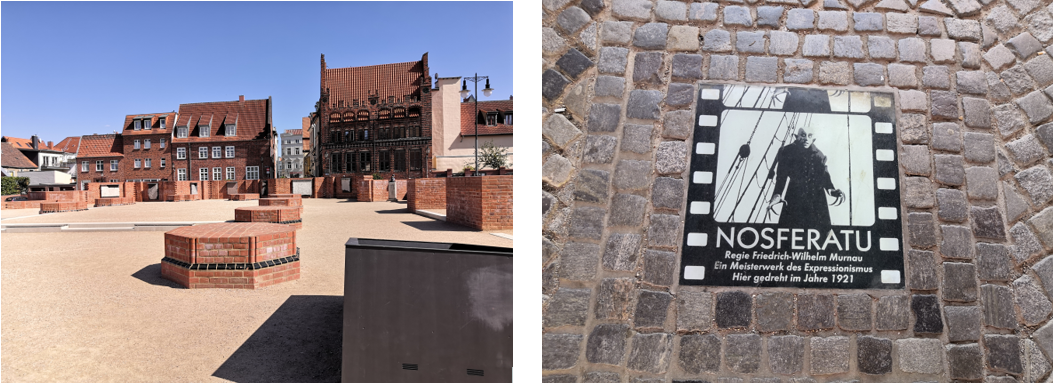
Stralsund
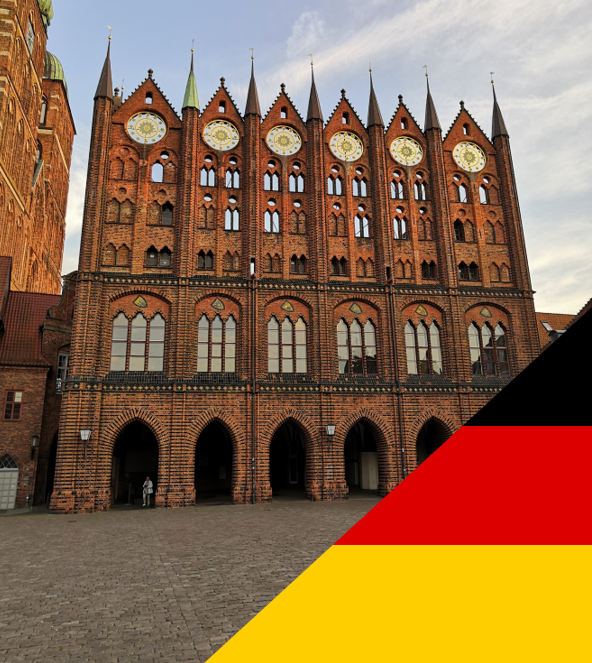
Day 1
From Sweden to a city in Germany that was nearly 200 years part of Sweden: Stralsund. Day 1 was primarily a ferry day where I went from Visby to Rostock and proceeded to Stralsund. But even on this day the Hanseatic League has accompanied me during the trip.
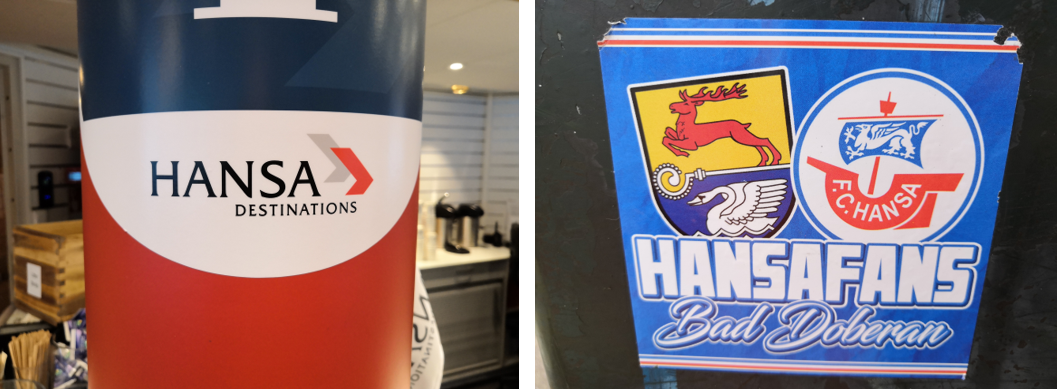
Day 2
On day 2 I visited the “Museumshaus Mönchstraße 38” to see how a house of a hanseatic merchant looked like from inside. The house was built in the 14. century and documents about 600 years of residential history as it housed tenants until the 1970s. It still has the typical features such as multi-storey hallway after the entrance (Diele), a “Kontor” (office), a lift for the goods, as well as a cellar and 4 storage floors for the goods.
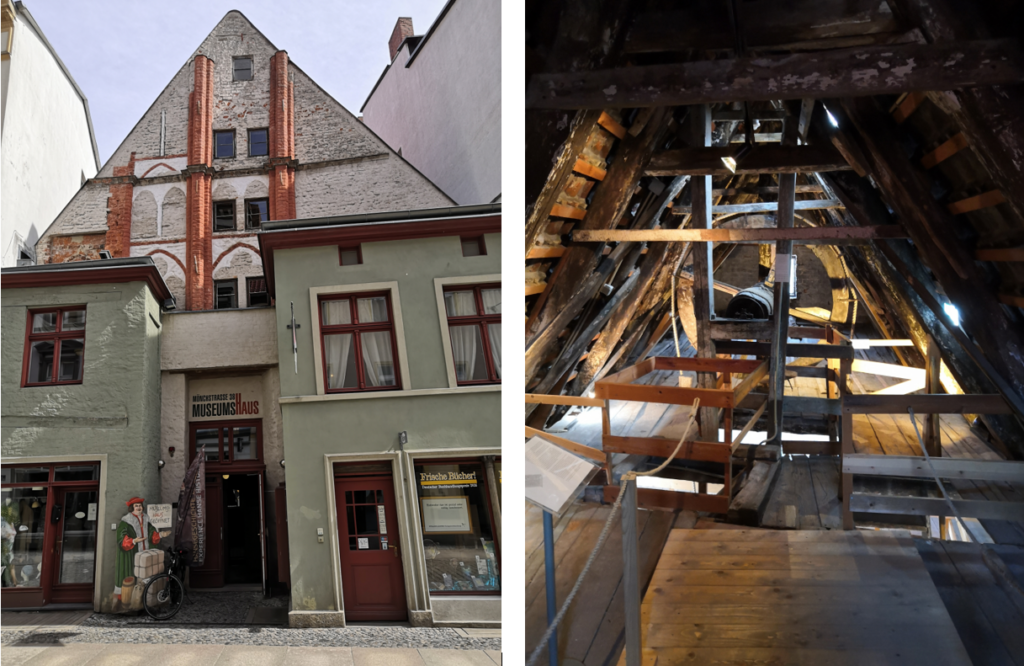
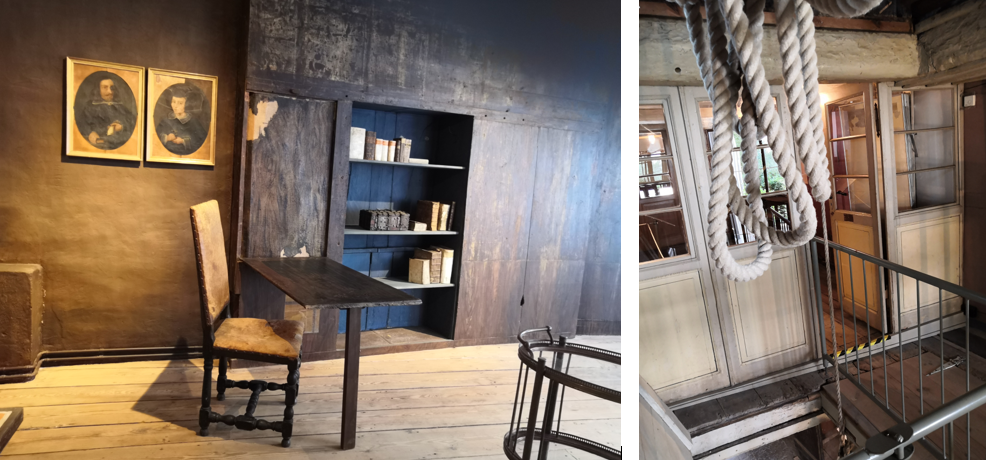
Afterwards I went to Stralsund harbour. Exactly where the Hanseatic trading port used to be, there is now an harbour island with the Ozeaneum building, a modern exhibition space of the German Oceanographic Museum. The focus of the museum is on the ecosystems of the Baltic Sea and the North Sea, the two main seas sailed by the Hanseatic League. The museum has a further focus on the conservation of marine ecosystems and for the protection of whales.
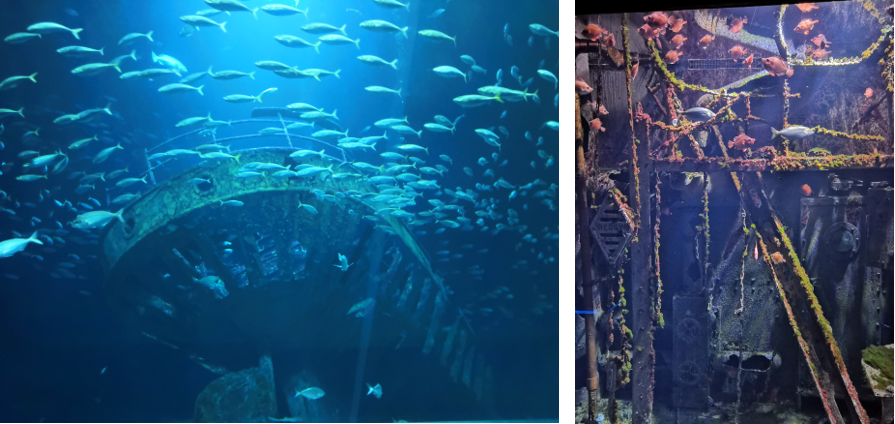
Day 3
As Stralsund acts as the gateway to Rügen, Germany’s largest island, I made a half-day excursion to see the chalk cliffs on the east coast of Rügen. Day 3 connects cultural heritage with natural heritage as the Jasmund National Park not only protects the magnificent chalk cliffs but also the largest contiguous area of beech forest on the German Baltic coast (part of UNESCO’s World Nature heritage ancient and primeval beech forests). The hike includes a compulsory visit of the prominent chalk rock promentary Königsstuhl.
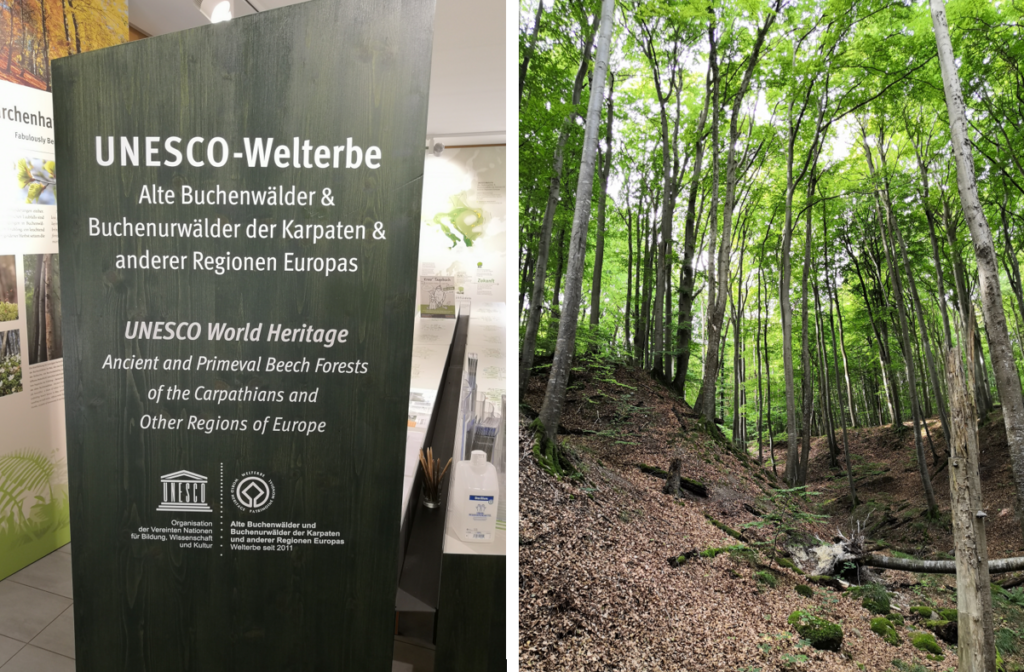
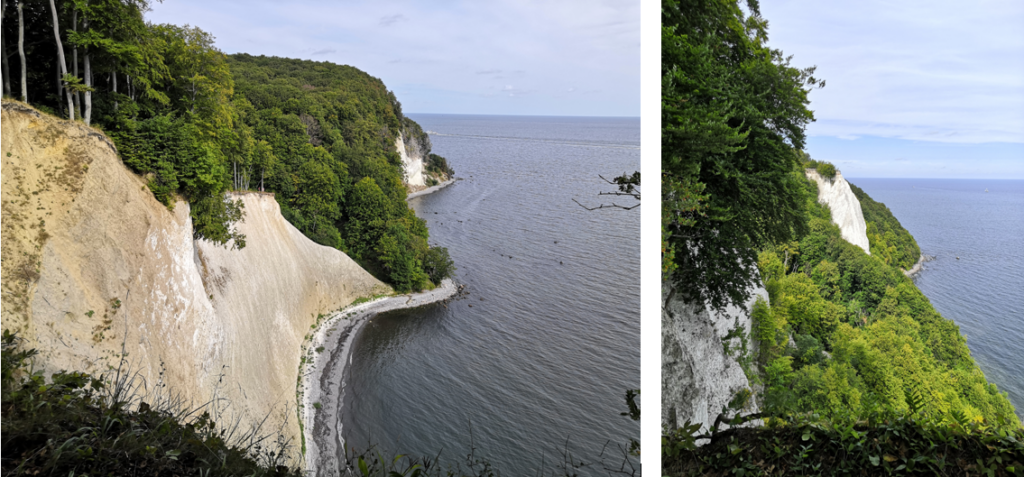
The centre of Stralsund is surrounded by water on all sides and has a characteristic mixture of Hanseatic brick gothic houses and baroque houses from the Swedish period. To learn more about the old town which ist completely part of World heritage, the World Heritage House was the first port of call. I visited the UNESCO coordinator of Stralsund Steffi Behrendt in her office right next to the main square with the town hall and Nicolai church. Steffi guided me through the world heritage exhibition, gave me tips for visiting the city and even opened the “Hackertscher Tapetensaal” especially for me, which is otherwise only accessible for guided tours. Many thanks Steffi for that warm welcome in Stralsund!
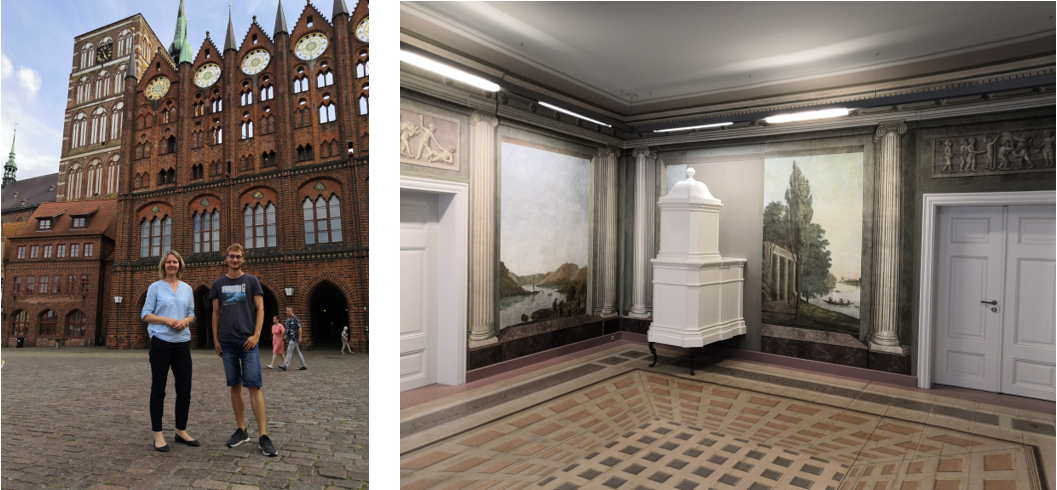
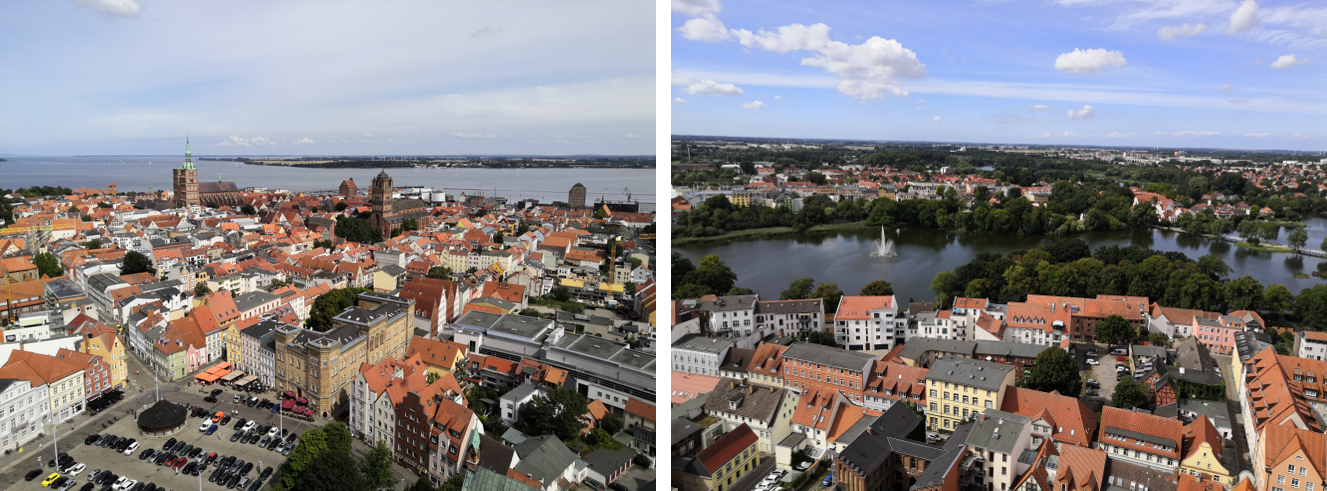
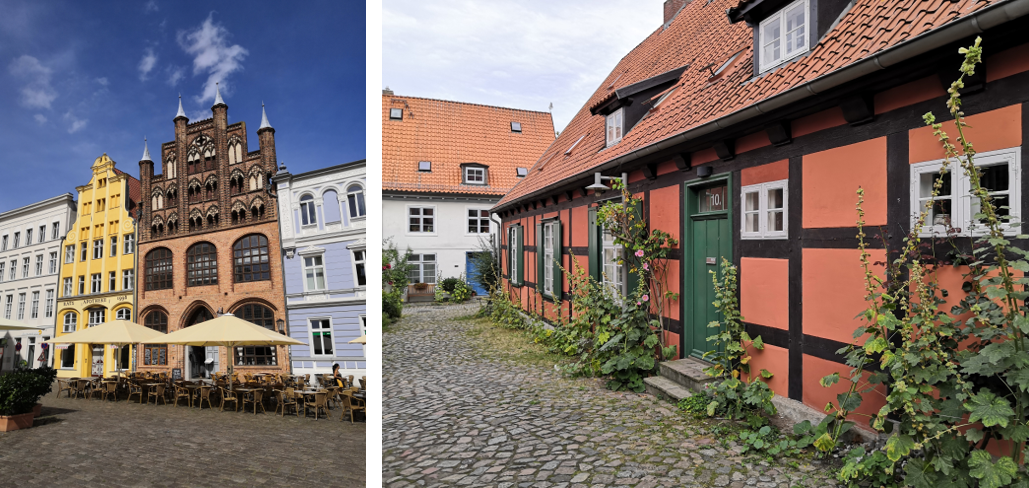
Visby
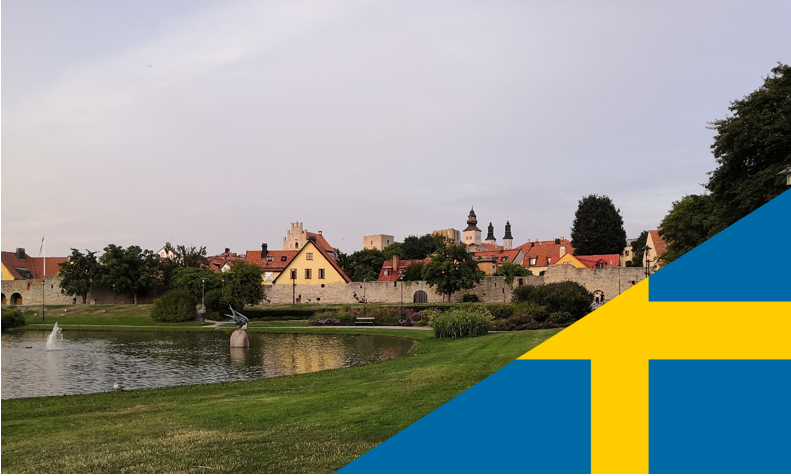
Day 1
Next stop on the list is Visby, a town with about 20,000 inhabitants on the west coast of the Swedish island of Gotland. To learn more about the history of the city, I met with World Heritage coordinator Louise Hoffman Borgö at the Gotland Museum. Starting the tour with the mysterious picture stones which were probably used as memorial stones back to 1400 years .
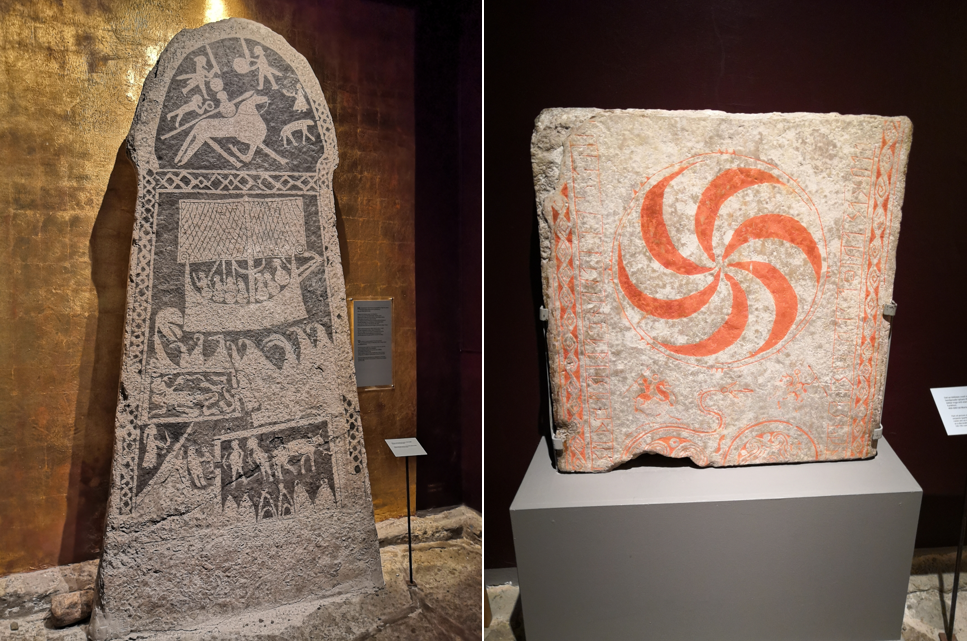
Visby lies very centrally in the Baltic Sea and this strategically good location strengthened Visby’s position as an important trading port already during the Viking Age. As a gateway to trade with the east, Visby was also of great interest to the Hanseatic League and one of the first members outside Germany. The city profited greatly from the trade of the Hanseatic League, many huge buildings were erected for the time and Visby is referred to as the medieval Manhattan.
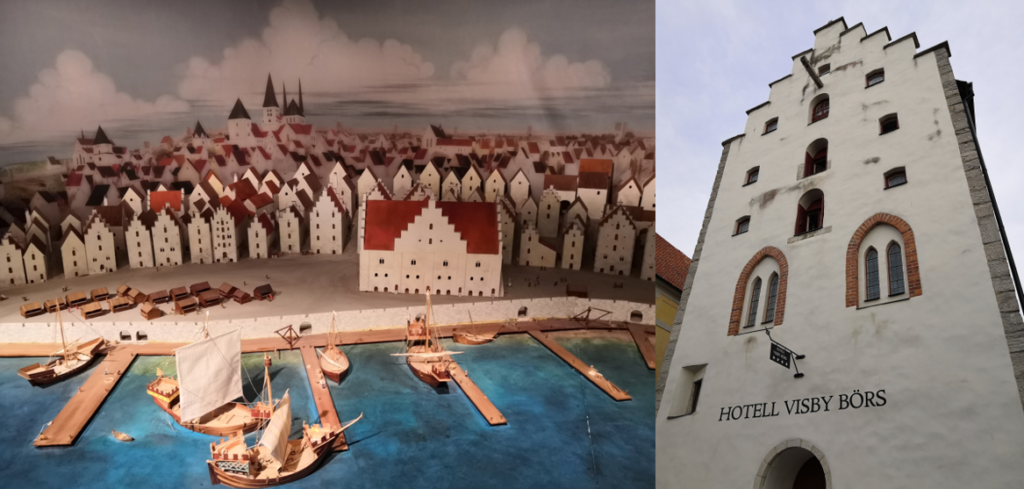
The museum also deals with the rapid decline in the town’s importance from the middle of the 14th century onwards: On the one hand, Visby was captured by the Danish King Waldemar in 1361, and on the other, improvements in shipping and navigation meant that the merchants of the Hanseatic League no longer had to rely on Visby as a stopover in the east. What may be bad for Visby at that time is fortunate for us: Due to the peace and quiet brought about by the loss of importance, the city has largely remained well preserved to this day.
Day 2
Next day started with a continuation of the guided tour through Visby, this time outdoors. Louise Hoffman Borgö, this time accompanied by her colleague Maria James, showed me around the UNESCO World Heritage Site. We visited the Visby city wall which is one of the best and also most completely preserved medieval city walls in Europe. It was errected beginning in the 13th due to conflicts with the people of the countryside of Gotland as the Hanseatic League consolidated its monopoly and forbid the Gotland farmers to take part in trade. It is more than 3 kilometres long and 27 large and 9 small towers still remain.
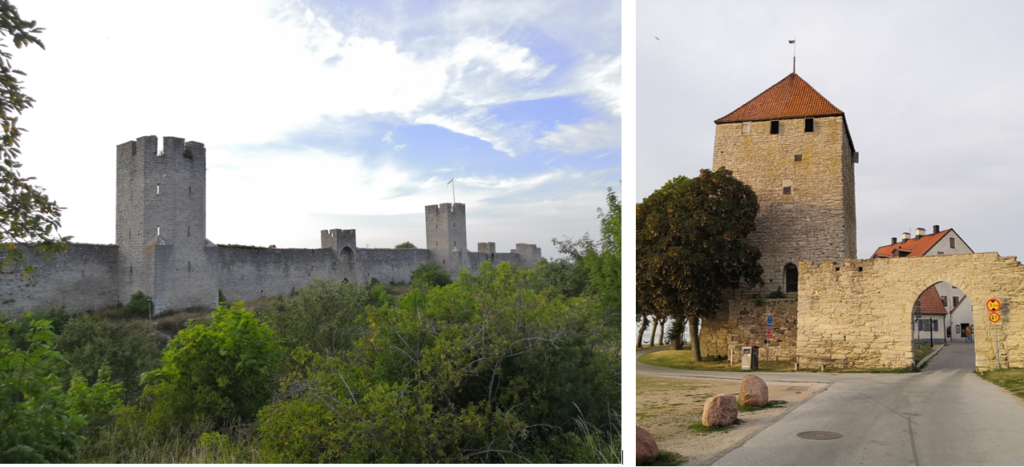
Equally impressive were the many church ruins that characterise the cityscape. The wealthy inhabitants liked to invest in magnificent church buildings. However, due to the economic decline and the Reformation, the many churches fell into disrepair and are now only preserved as imposing ruins.
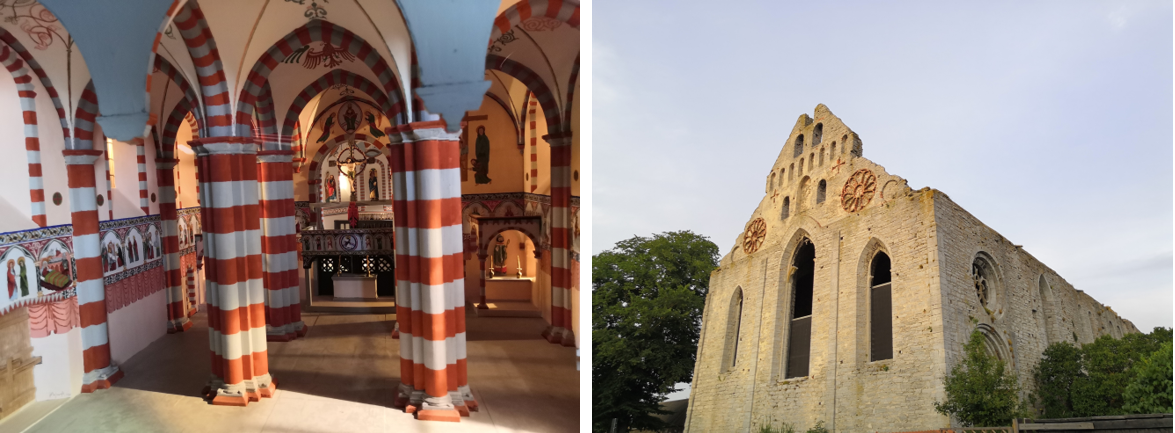
Louise and Maria also told me a lot about their work and the Visby of our times: Today the pitoresque small town is well known for its sheeps which are the symbol of Gotland that can be found everywhere. Equally characteristic are the rosebushes planted in front of many buildings. Gotland is one of the most popular holiday islands for Swedes in the summer and Visby is also the venue for the political Almedalen Week, the “Stockholm Week” parties and the big medieval festival “Medeltidsveckan”. It seems that the Unesco World heritage zone today is quite a liveable place. Once again big thanks to Louise and Maria for showing me around Visby!
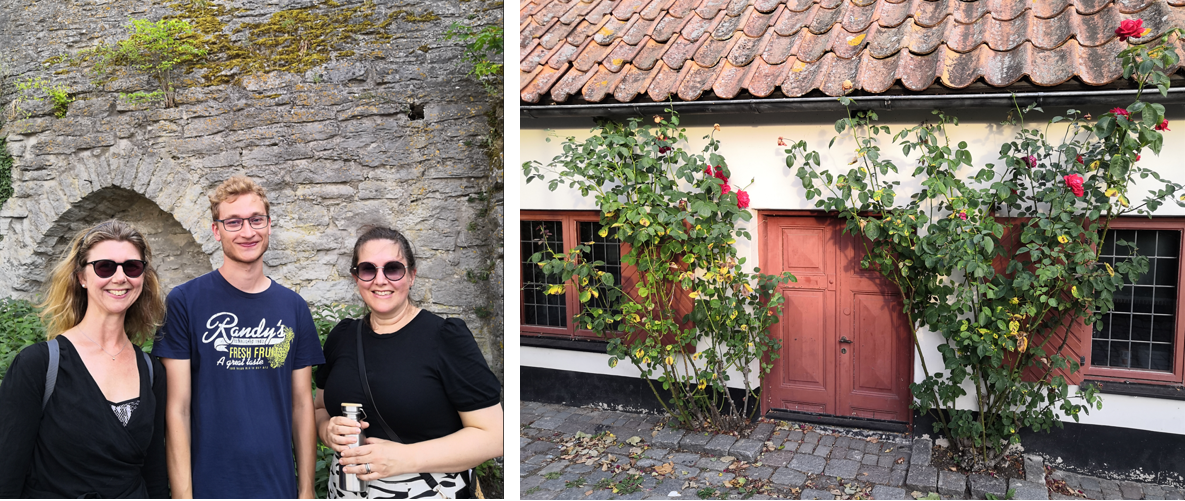
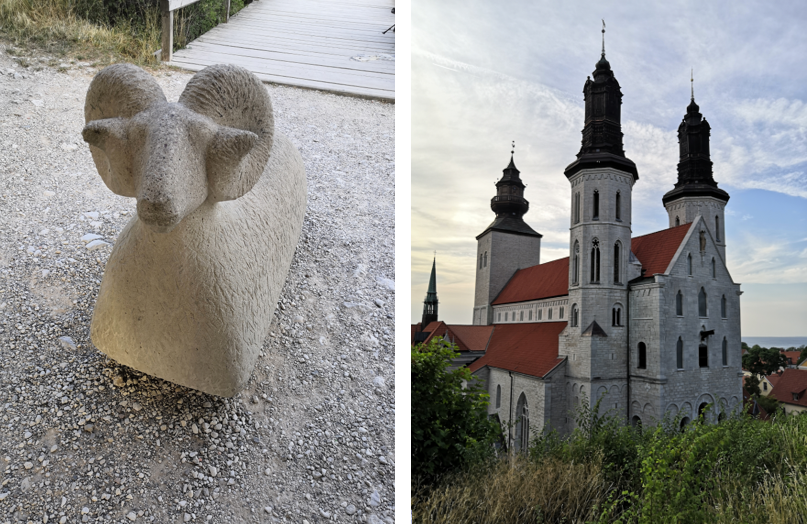
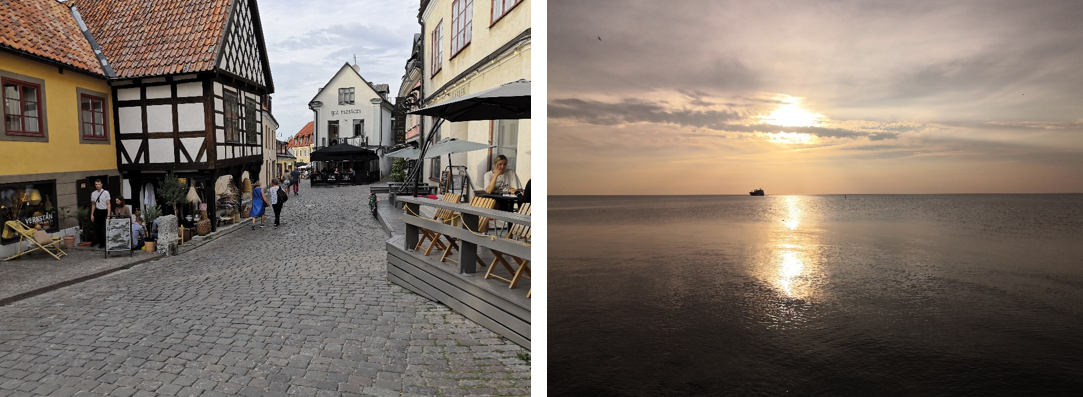
Helsinki
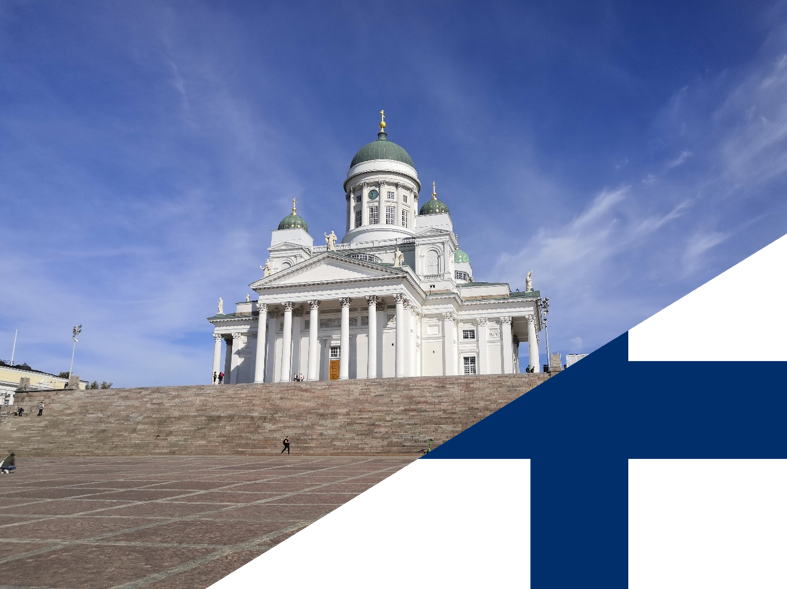
Day 1
Arrival in Helsinki, the biggest city and capital of Finnland. Helsinki (at that time Helsingfors) was established in 1550 by King Gustav I of Sweden. His intention was to build up a rival trading town to Tallinn which was member of the Hanseatic League. So with Helsinki we are actually having a closer look at the competition of the Hanseatic League ;).
Two churches were on my bucket list on the very first day: First, the protestant Helsinki Cathedral which is impressively enthroned above the senate square. Second, the Temppeliaukio Church, which is also a protestant church but has a totally different appearance: The church was directly built in solid rock covered with a dome made of copper. Afterwards I enjoyed the view from the terrace of Oodi central library, which is not only a public library but also a public space for the whole city offering video game rooms, a sound studio, rooms with 3D printers or sewing machines, shared offices and much more. The day ended with a walk through Sibelius Park where I watched the sunset at the famous monument for the finnish composer Jean Sibelius that is assembled by more than 600 steel pipes.
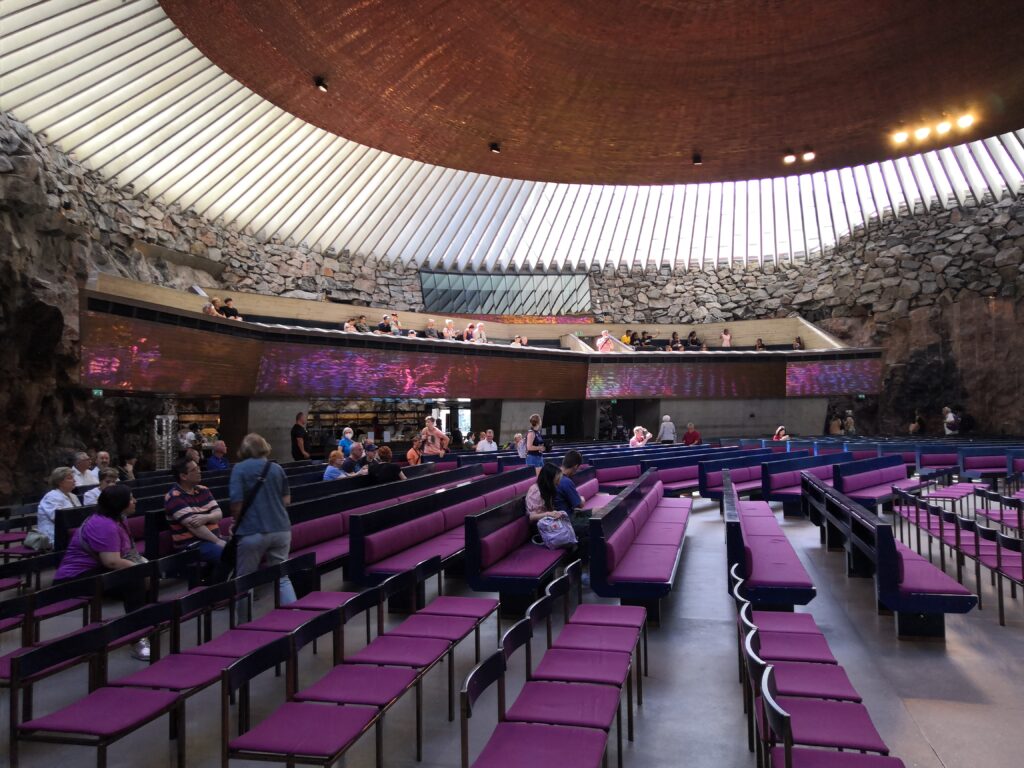
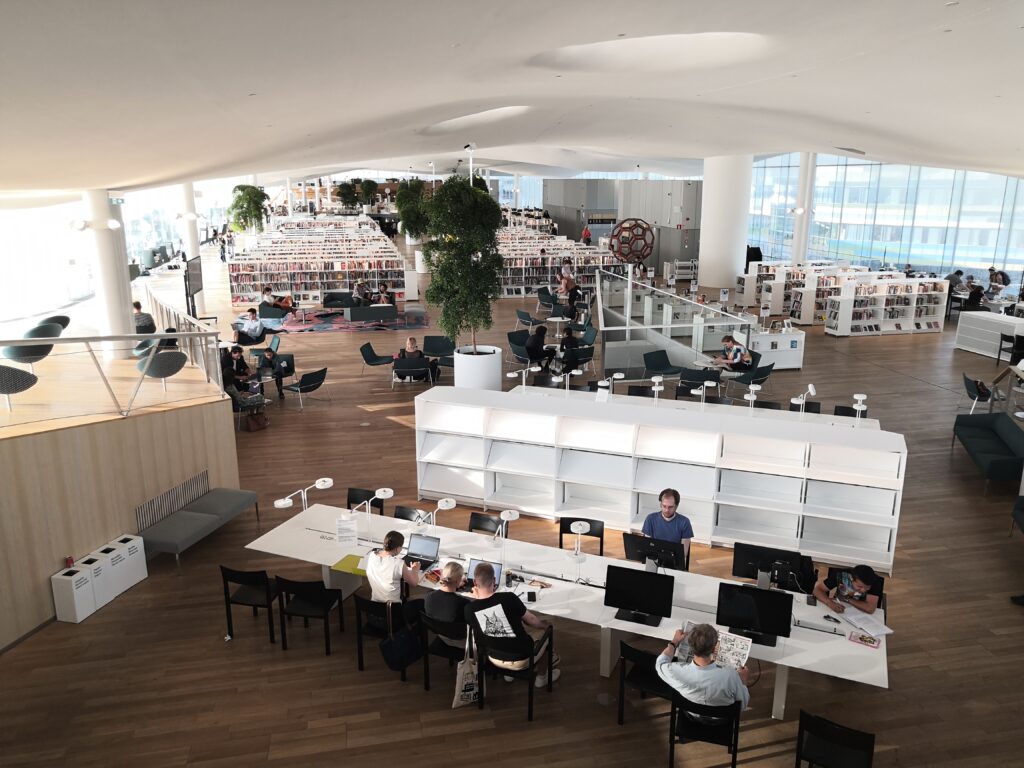
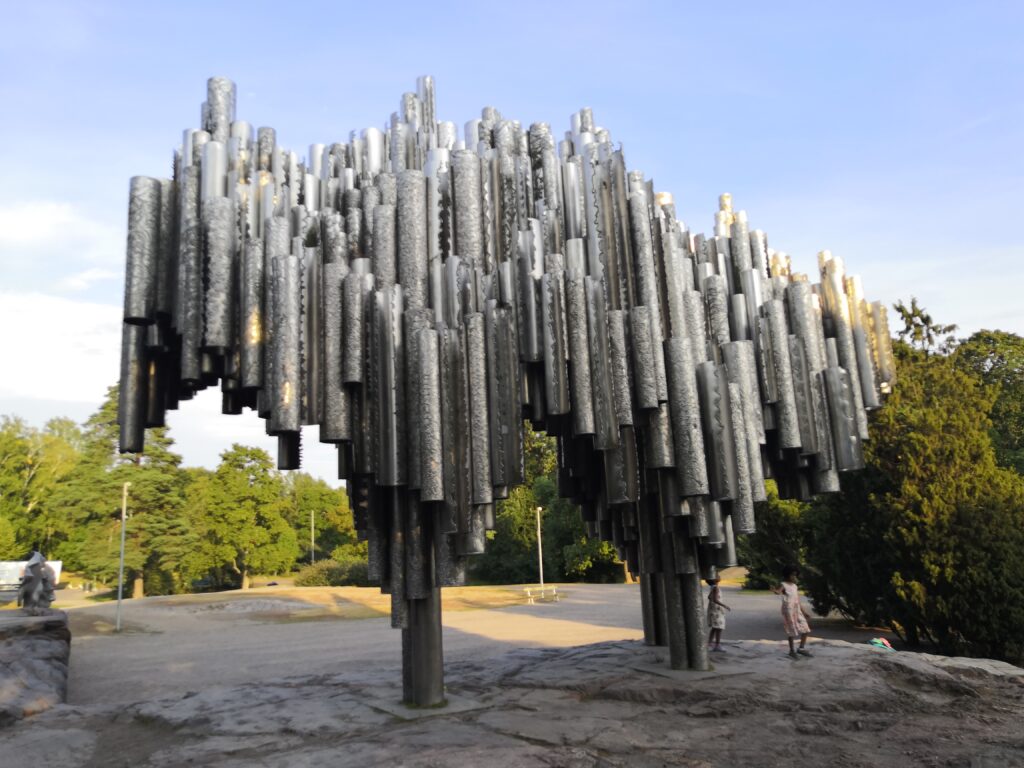
Day 2
Not much of King Gustav’s plan came true and Helsinki was still a tiny town in the 18th century. The region slowly grew in importance after Sweden lost the Great Nordic War and most of its fortresses in the east. Therefore in 1748 the Swedish Crown startet the construction of a new fortress to protect against the Russian expansionism. Sveaborg (meaning castle of the Swedes) was built on 6 islands off the coast of Helsinki mostly by soldiers. Although the bastion fortress seemed to be impregnable and was even called “Gibraltar of the North” Russia , however, captured Sveaborg in 1808. With Finnlands independance in 1917 Sveaborg again serves in defence for a new country and was renamed in Suomenlinna (castle of Finnland). Today it is not only a unique testimony of fortification of that time but also a lively district of Helsinki with approximately 800 inhabitants. Furthermore, the garrison buildings on Suomenlinna houses the Naval Academy of Finnland and also the unique dry dock is still in use.
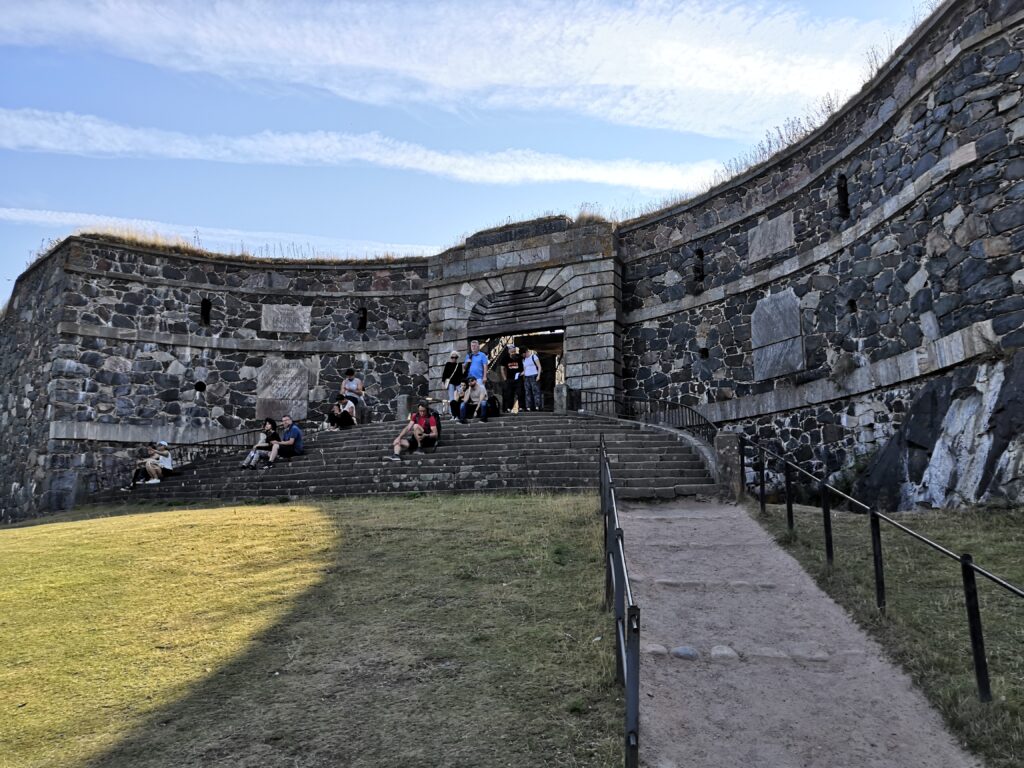
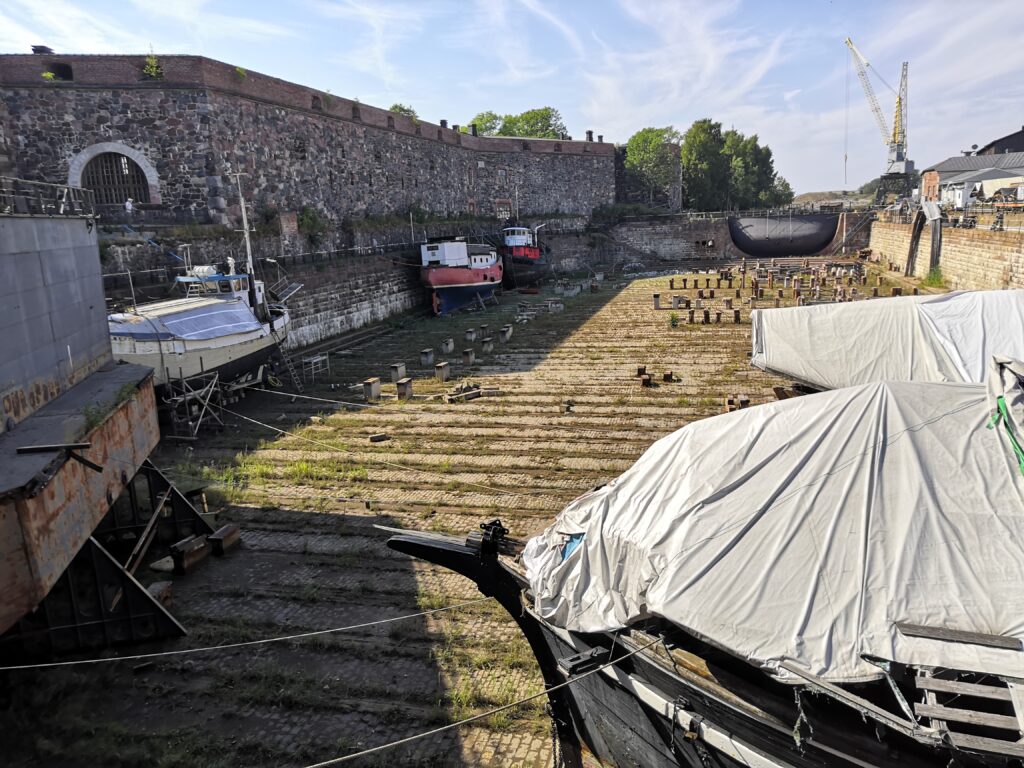
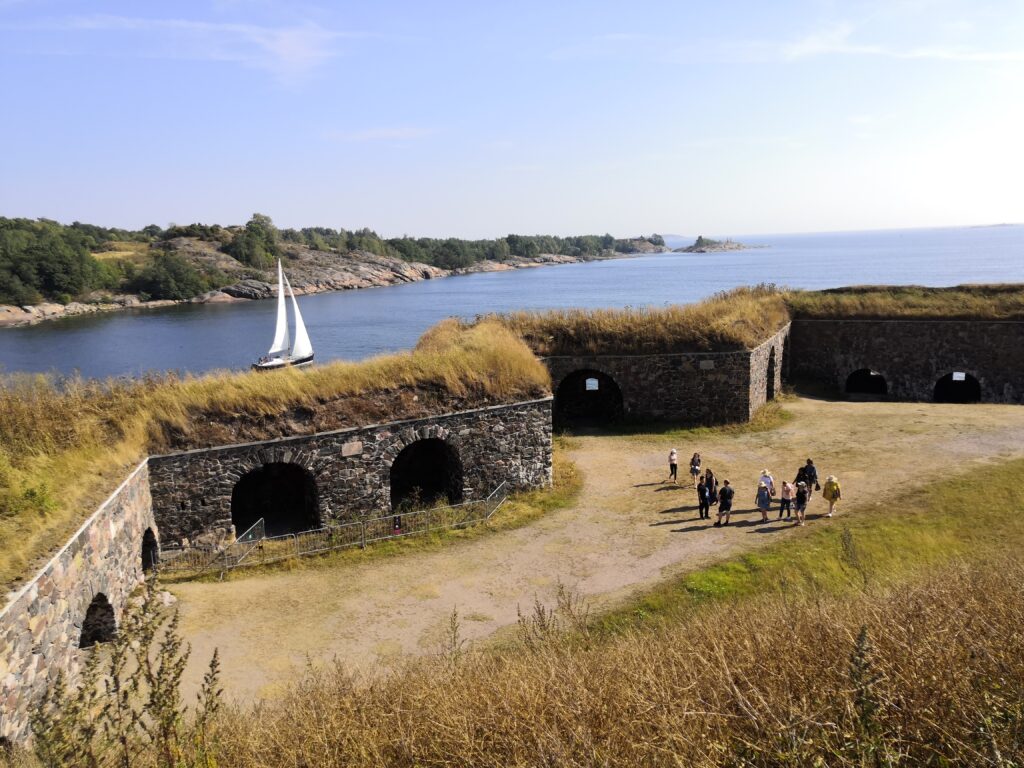
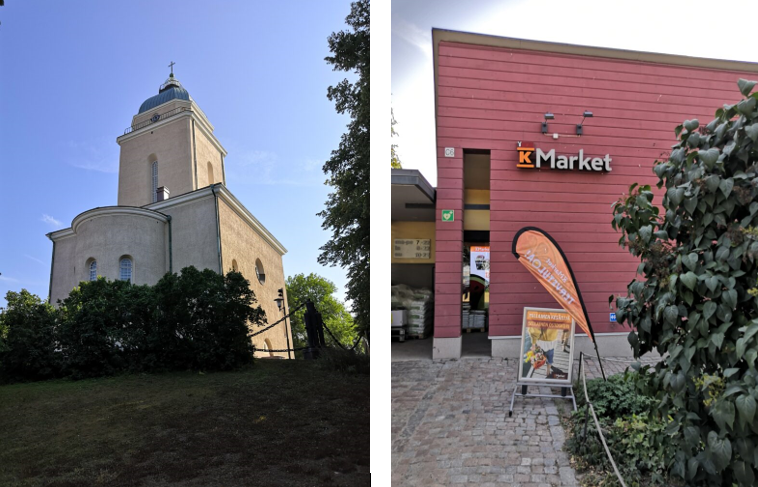
Day 3
To get an impression how life in Finnland was in former times I went to the beautiful island of Seurasaari. It is not only a popular recreation area but also site of an open-air museum with old wooden buildings and farms brought here from all over the country. Furthermore, Seurasaari was the favourite jogging route of former President Urho Kekkonen.
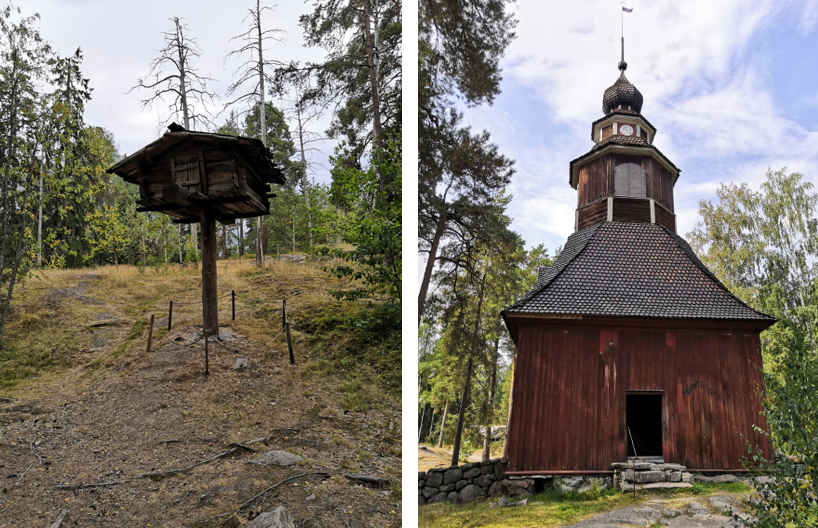
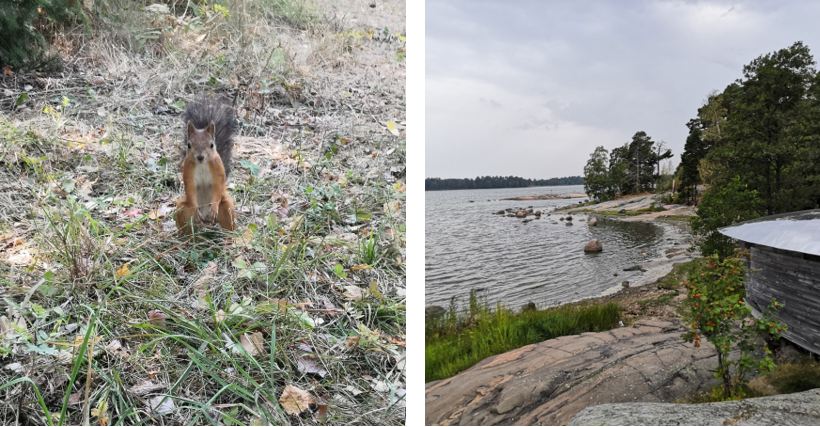 beautiful nature on the island
beautiful nature on the island
The Helsinki experience was completed with a visit of the wooden Kamppi Chapel also called silent chapel even if it is one of the most frequently visited chapels. Next to the Kamppi Chapel under the urban square of Lasipalatsi is the museum of modern arts “Amos Rex” with a weird but fascinating exhibition.
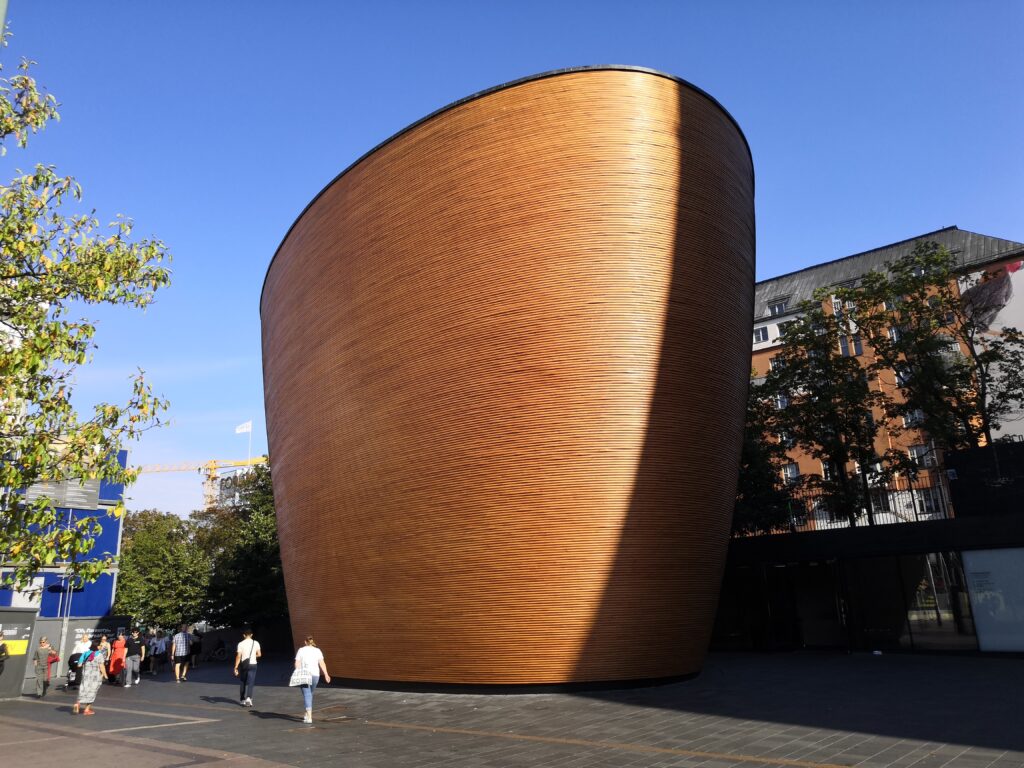
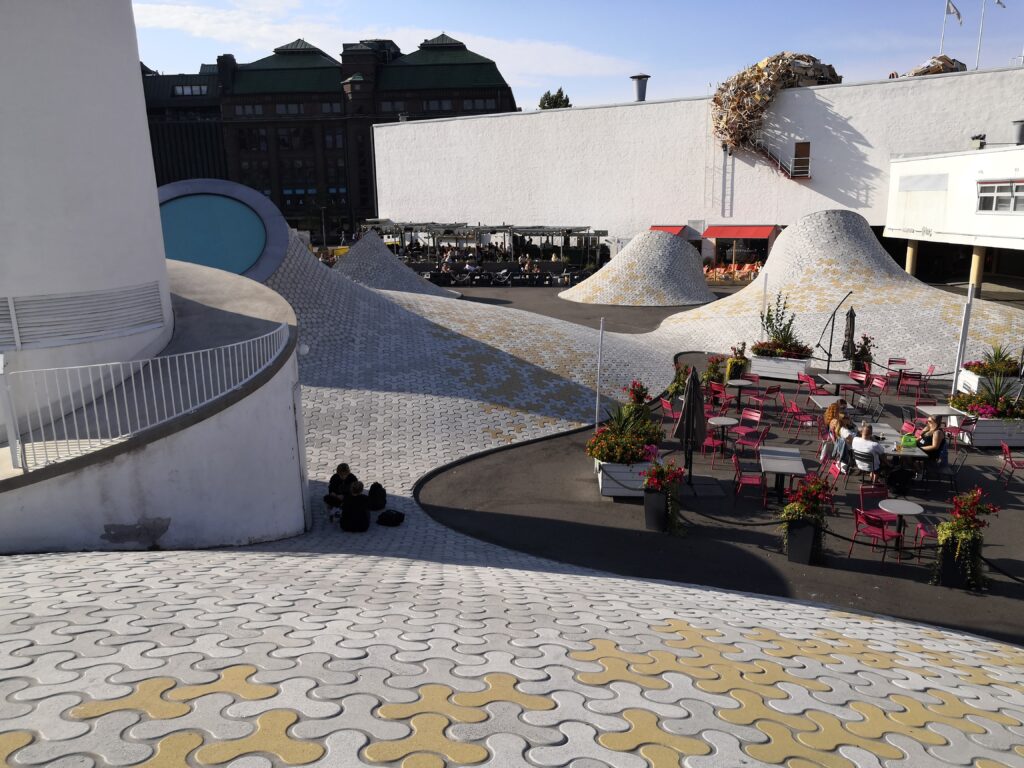
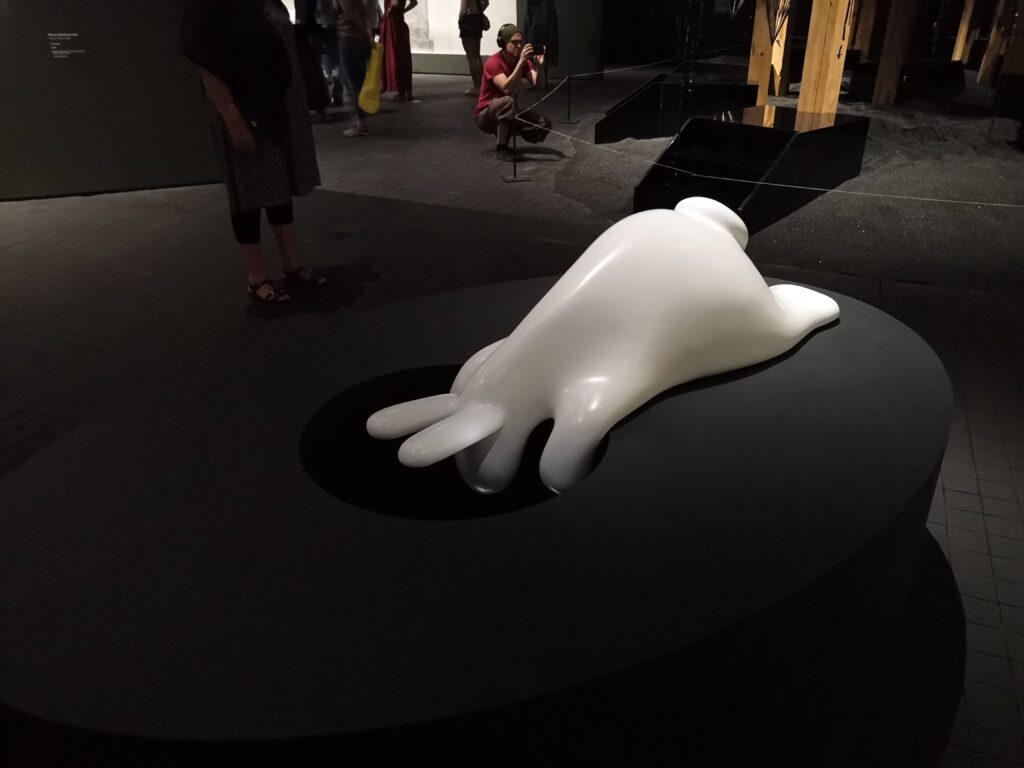
Riga

Day 1
Next on the list is Riga, which became member of the Hanseatic League in 1282 which is just 81 years after its considered foundation by German Bishop Albert. To discover this beatuiful city and learn more about the UNESCO heritage in Riga I met Aigars Kušķis, who is repsonsible for questions regarding urban planning with respect to UNESCO heritage in the historic centre of Riga.
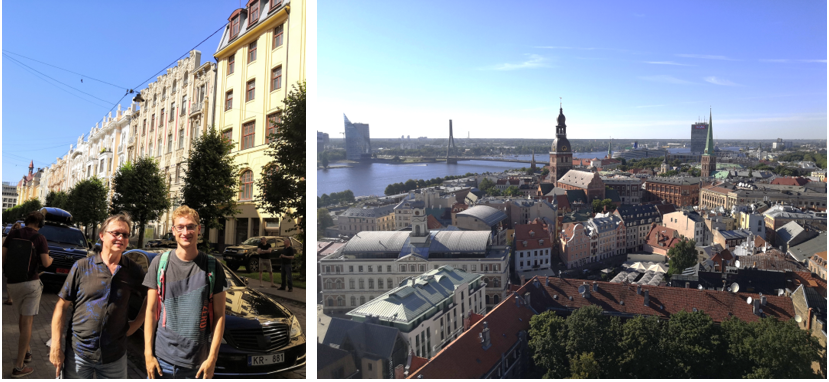
It was a pleasure to walk around with him as he knew interesting details and facts for every centimeter of his area of responsibility. As the best local tour guide which you can probably get he took me to places where I would never have expected world heritage: For instance, he showed me some rare remains of the original city wall in the cellar of a Hotel next to its Spa as well as one of the oldest coat of arms of the city in the courtyard behind the famous “three brothers”.
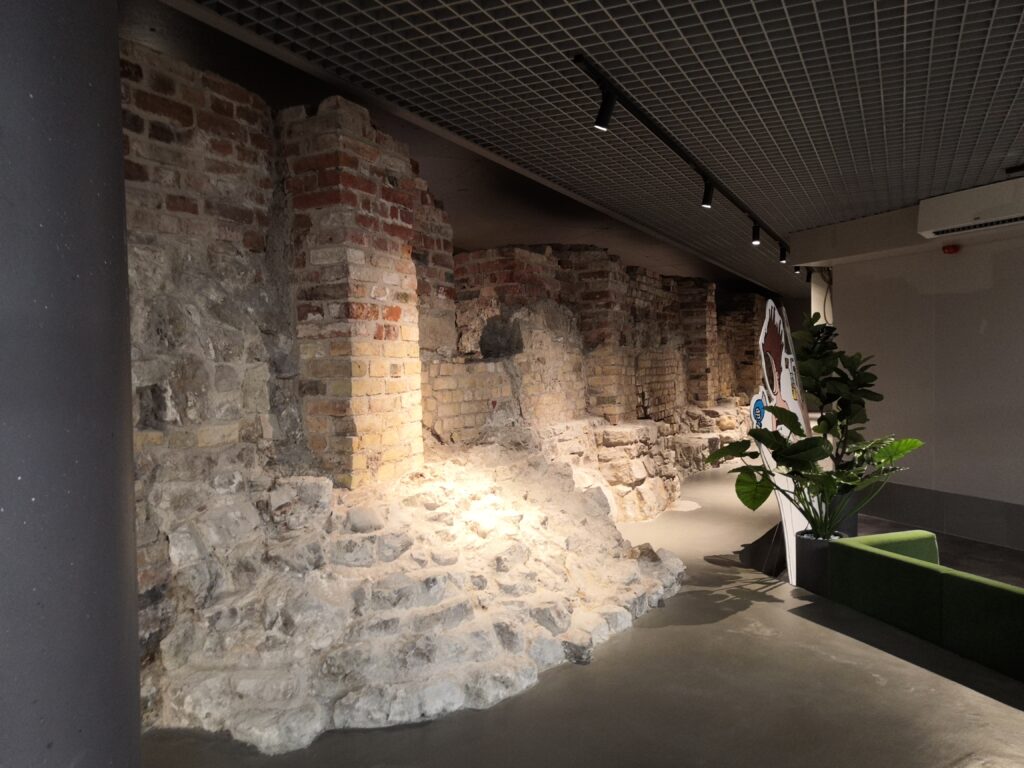
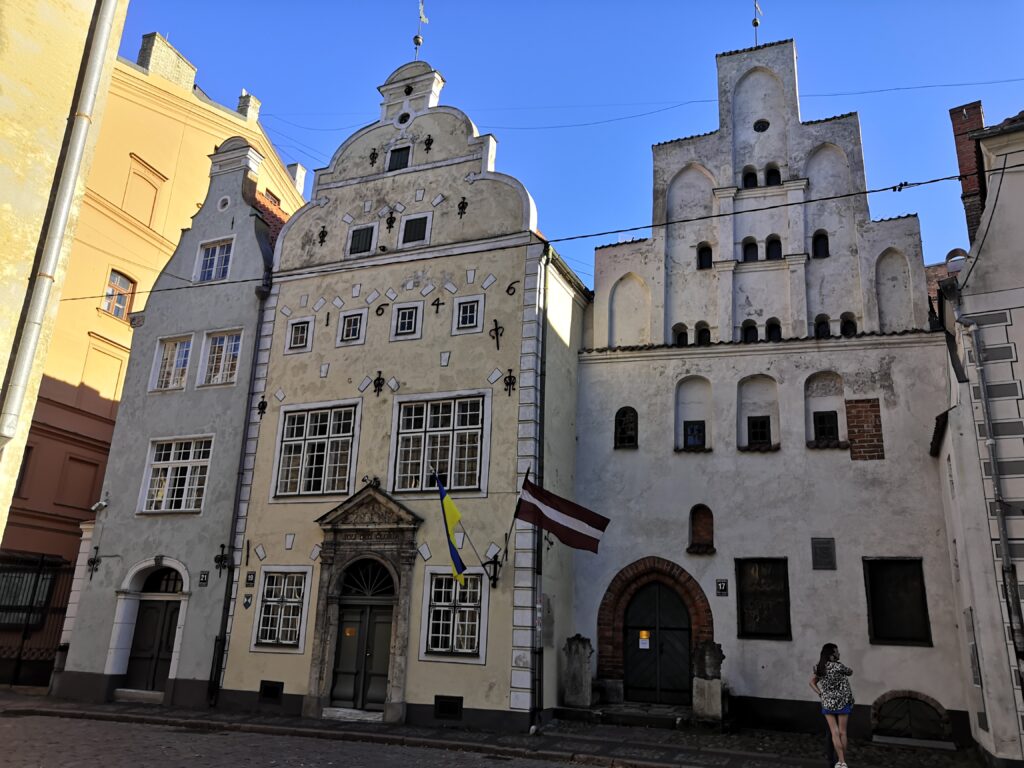
Aigars also drew my attention to where the course of the namesake Riege River can still be seen today and where houses were not rebuilt after bombings in World War 2. The tour ended in the newer part of the UNESCO core area: The art nouveau district which has one of the highest concentration of art noveau buildings worldwide. The facades offered a wide variety on various details to watch. Once again many thanks to Aigars for these fascinating insights!
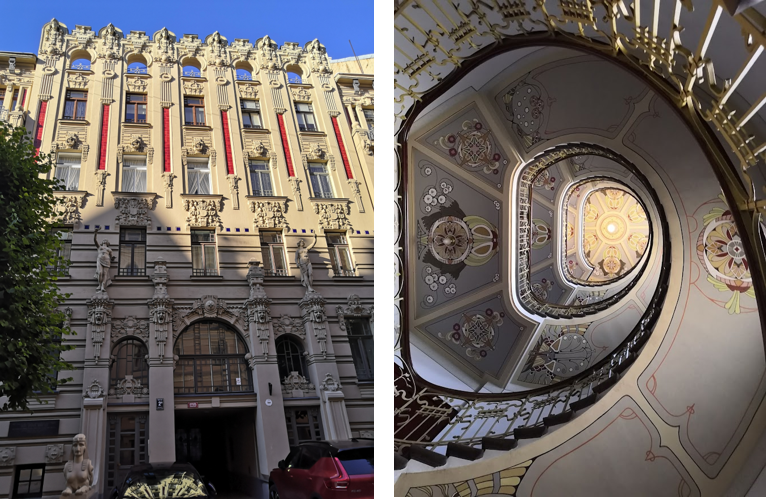
Day 2
To find out more about the connection between the city and trade I visited the House of the Black Heads which is situated on Riga’s main square. The Black Heads are an association of local unmarried male merchants, ship owners, and foreigners. Together with the large guild hall and the small guild hall, the House of the Black Heads impressively shows that the power in this city long emanated from merchants. Additionally, it also served also as gathering hall for the whole city of Riga and was rebuilt from 1996-1999 after it was demolished in WW 2. Today it is a museum and also served as work space for the Latvian President . Afterwards I visited the “Museum of Riga’s History and Navigation” which gave me interesting insights in the city’s changeful history that was always closely connected to trade and influenced by big foreign powers until Latvia became independant 1991.
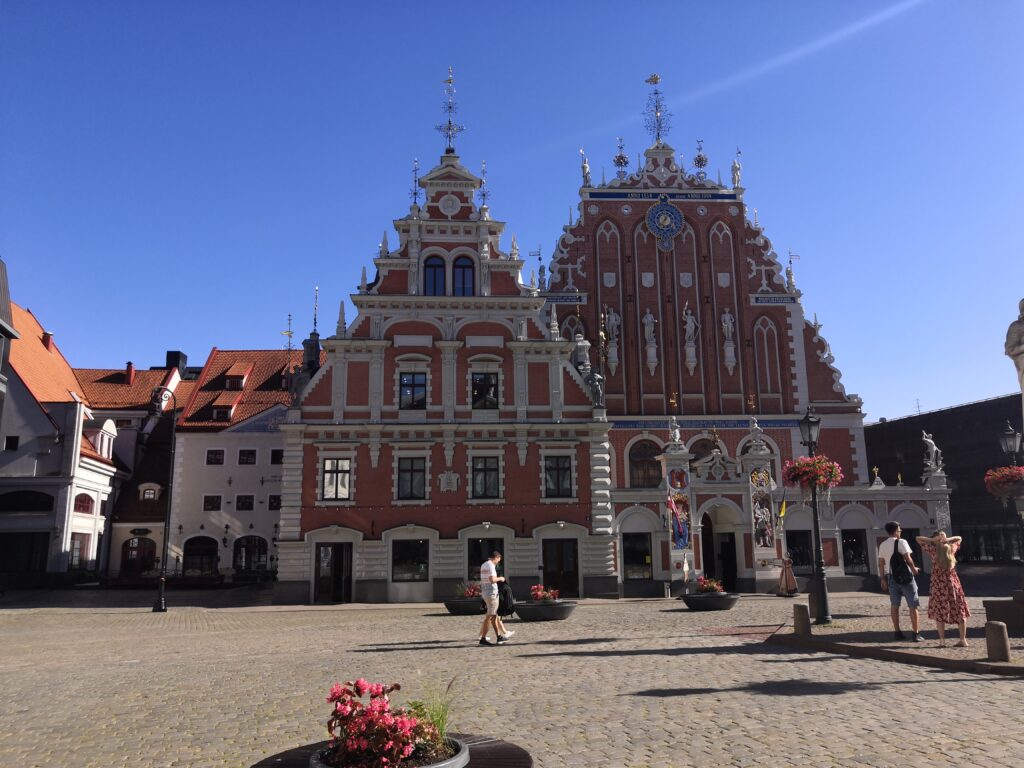
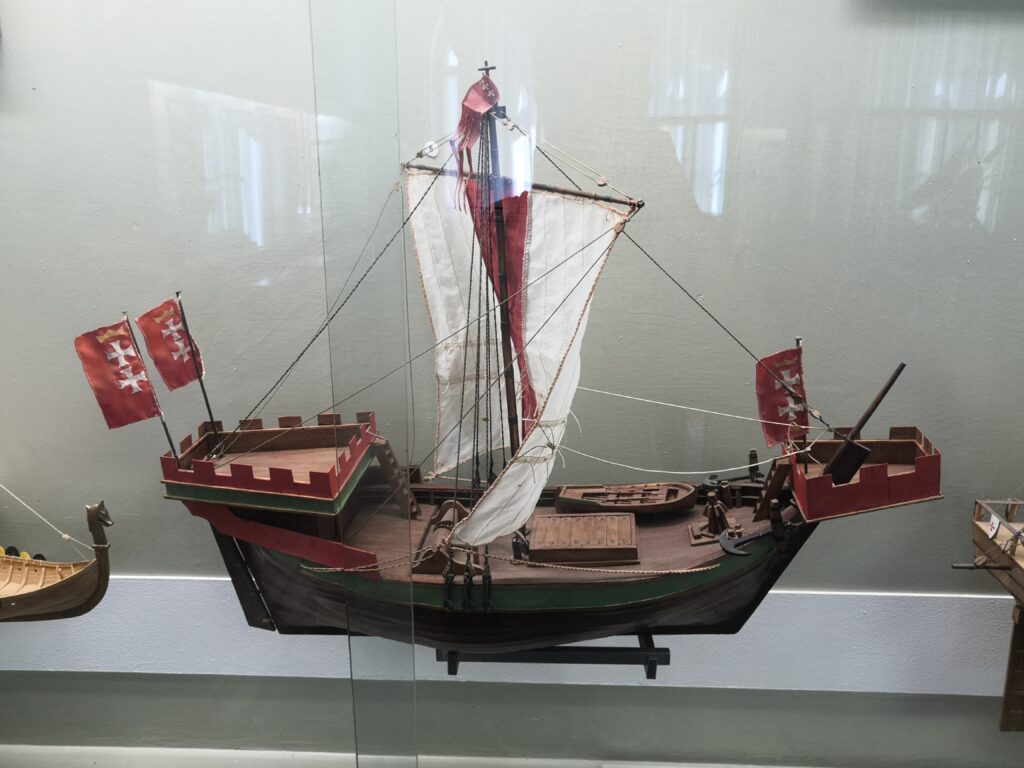
The Hanseatic league and their merchants did not only influence the cityscape with their guild houses and department stores but also influenced the present. By law it was not allowed to build higher buildings than the 3 church towers in the old town: This rule has been preserved in the historic centre until today. Riga is also still very closely connected to the Hanseatic League. There is a Lübeck hall in the rebuilt House of the Black Heads and even a real estate project has also appropriated the name “Hanza”.
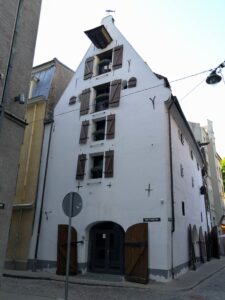
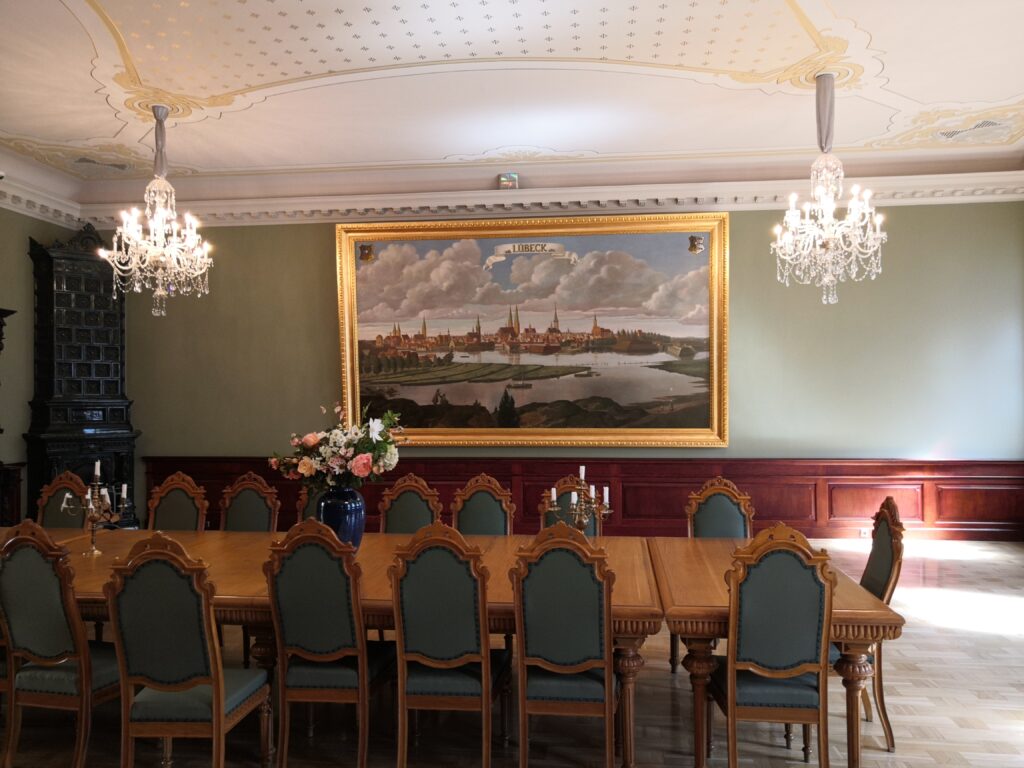
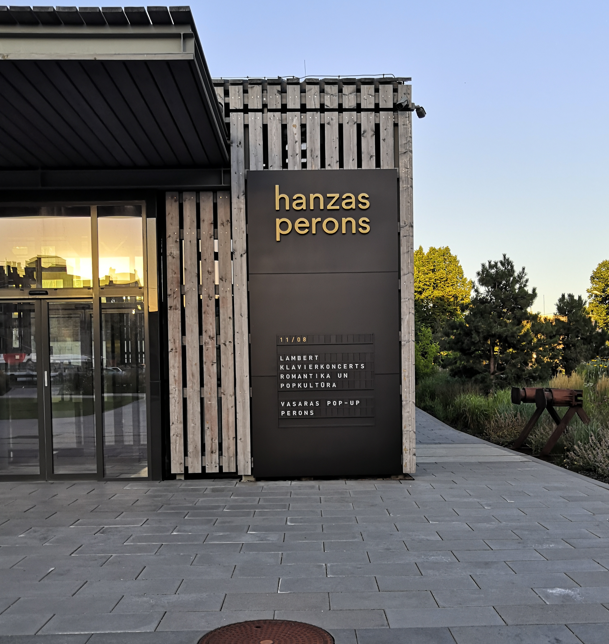
Day 3
To transport goods, the Hanseatic ships had to sail along the Daugava to the baltic sea. Today between baltic sea and the river Lielupe is the local recreation area of the inhabitants of Riga called Jurmala. The place is famous for its wooden houses in art nouveau style and was a popular tourist destination for Communist Party officials in former Soviet Union.
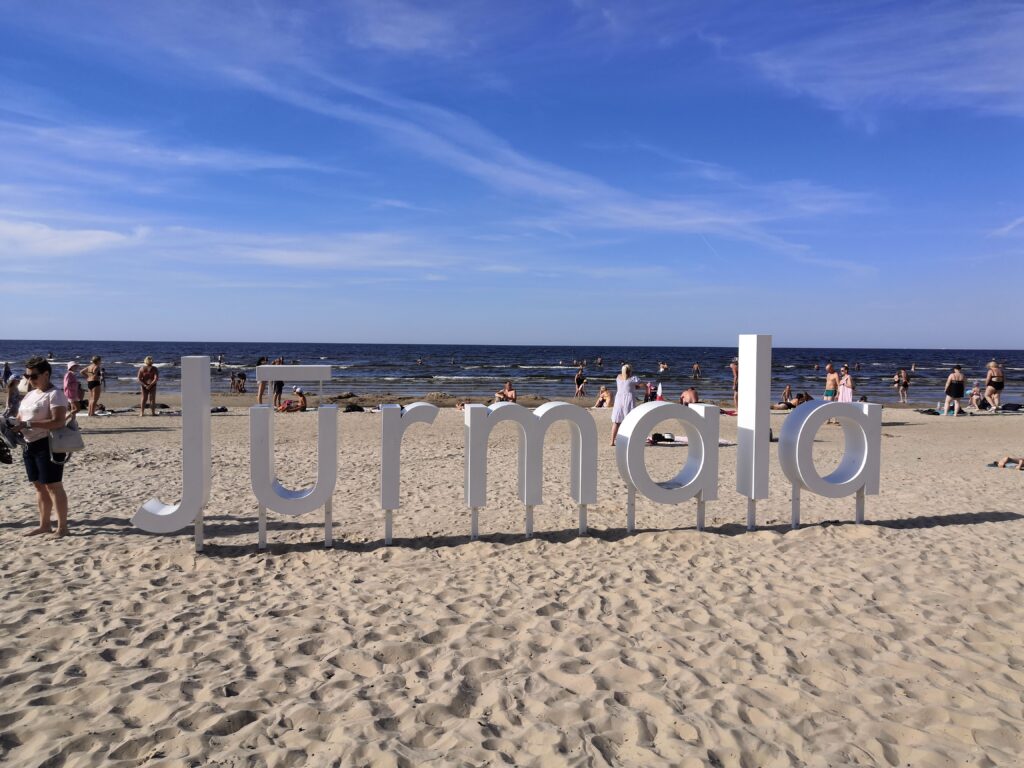
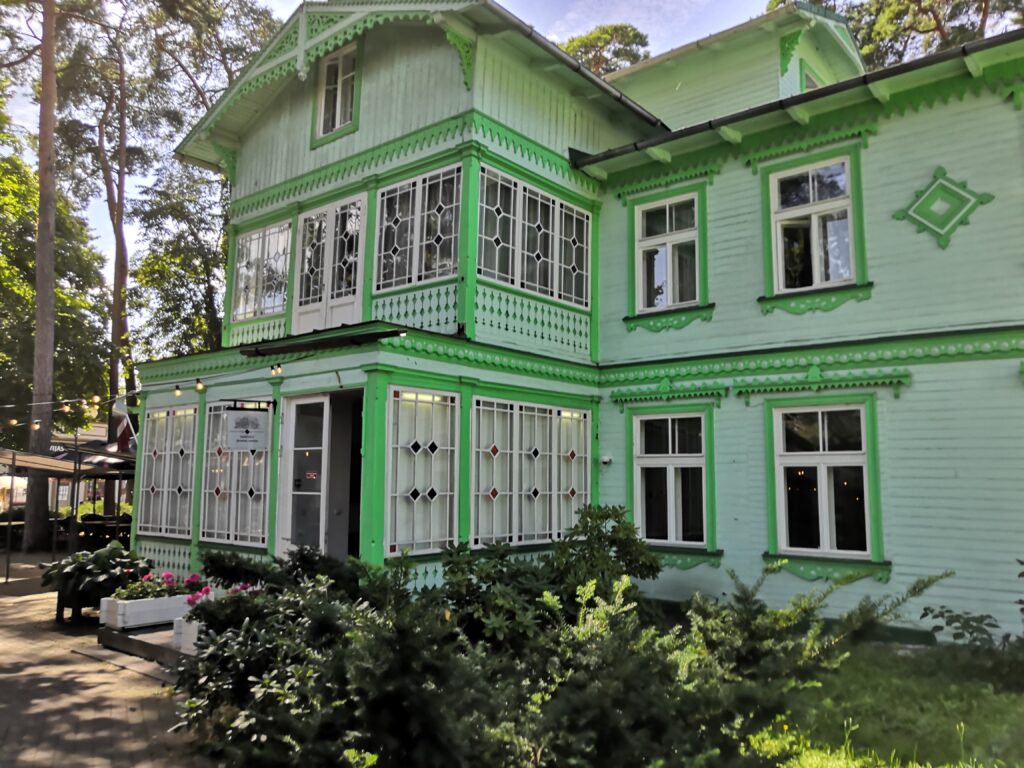
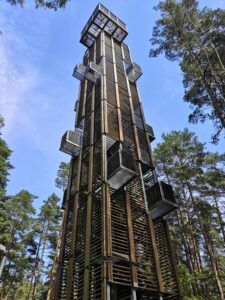
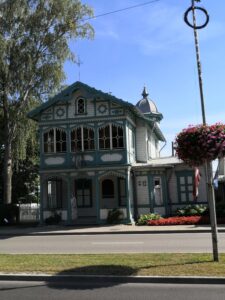
Vienna
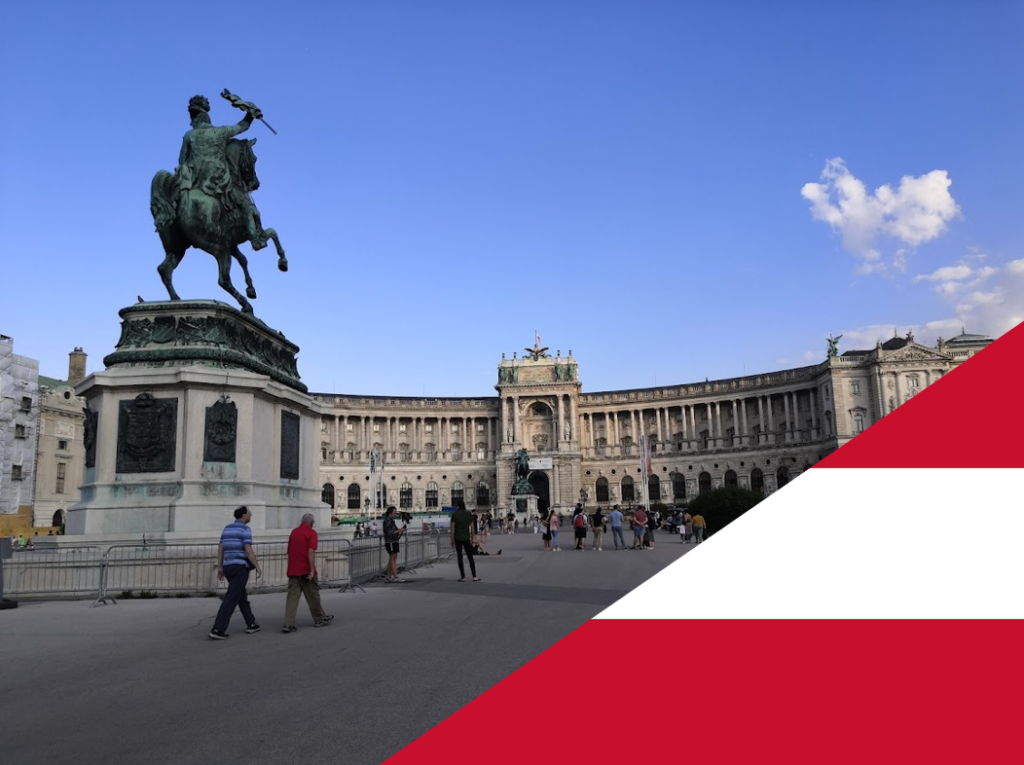
Even if Vienna was never part of the Hanseatic League every cog (trade ship of Hanseatic League) needs a home (air)port to set sail to distant lands. In my case this was Vienna the capital of Austria.
I arrived at 10 th August in Vienna and the first destination was Donaukanal. This is a former arm of Vienna’s main river Danube , now regulated as a water channel and serving as recreation area. There I had a very warm welcome by Regina Wiala-Zimm who is the responsible person for UNESCO and OWHC in Vienna. We had a nice talk about the heritage in Vienna (Viennas Inner district, Palace and Gardens of Schönbrunn and Frontiers of the Roman Empire) and her work for OWHC/Unesco in Vienna.
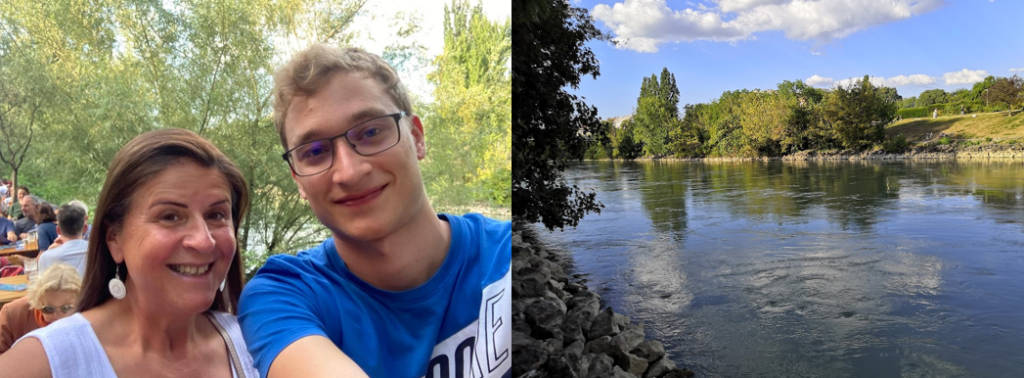
Afterwards I visited the 1st district (historic centre) of Vienna which is part of world heritage as a whole. Here you can find many houses from various periods as well as the monumental buildings like Rathaus, Hofburg, Parlament at the Ringstraße.
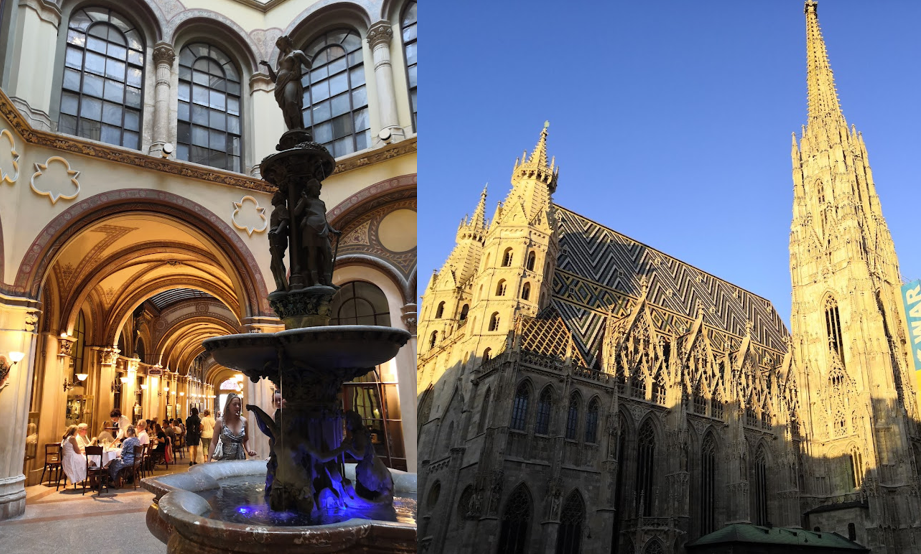
On the next day I went to Hunderwasserhaus which proves that art and culture are so important in Vienna that even social housing can be designed by an artist (Friedensreich Hundertwasser, finished in 1985). The Vienna experience ended with a walk through the Gardens of Castle Schönbrunn which is also an UNESCO heritage site. The site does not only impress with the castle and the garden itself but has also one of the oldest zoos in Europe, a palm house, an orangerie, a gloriette and a maze.
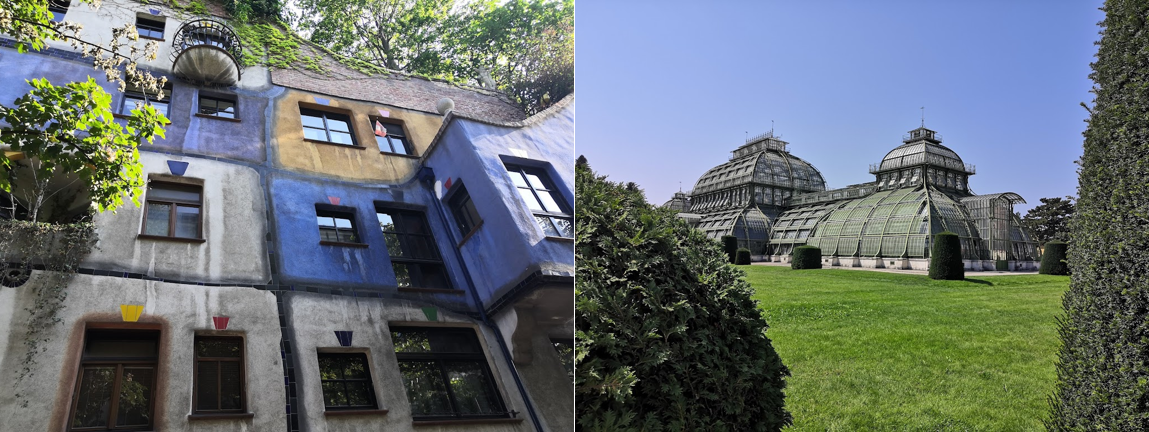
Finally, there is not much more to say except this picture below and that 2 days are far too little for Vienna. See you in Riga.
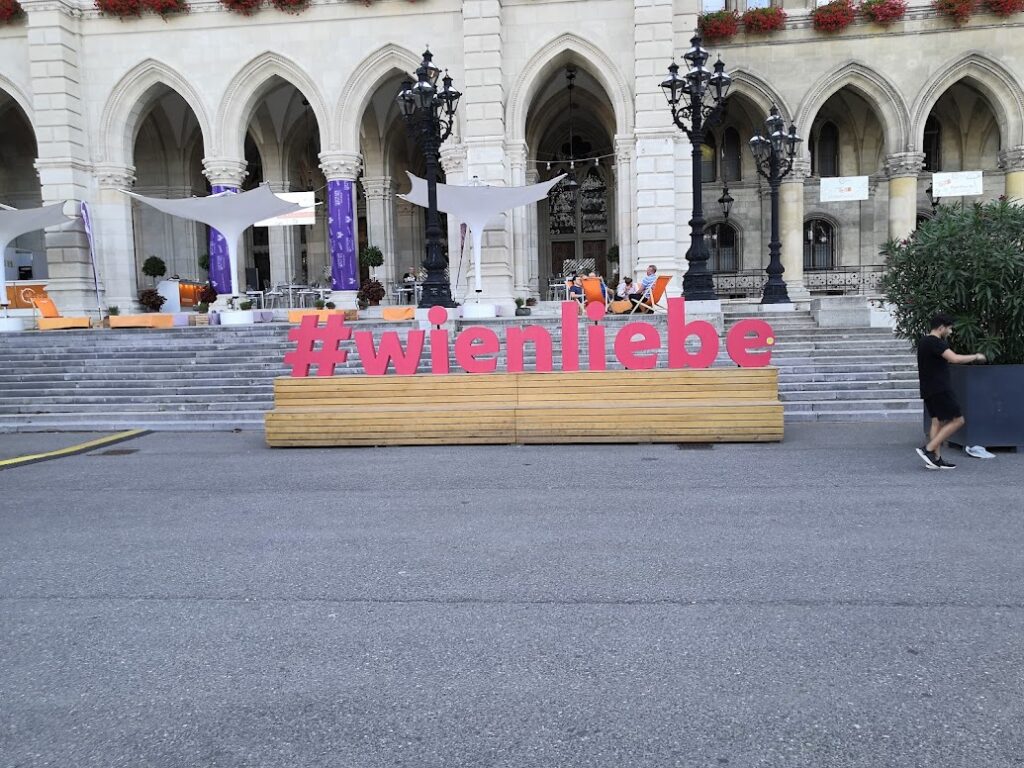
Welcome
to this blog, my name is Philipp and this is my first post before the trip of OWHC scholarship 2022 begins. I hope you will enjoy following me and you can also have a look at my Instagram Account.
Topic
I mainly want to visit cities that belonged to Hanseatic League which was one of the first economic and also political union across national borders. I am interested how these cities in different countries with a common heritage look today, have developed and if the influence of the Hanseatic League is still visible.
Route
My route will include 8 cities in 5 different countries starting in Vienna. I will travel from 10th of August to 28th of August.
